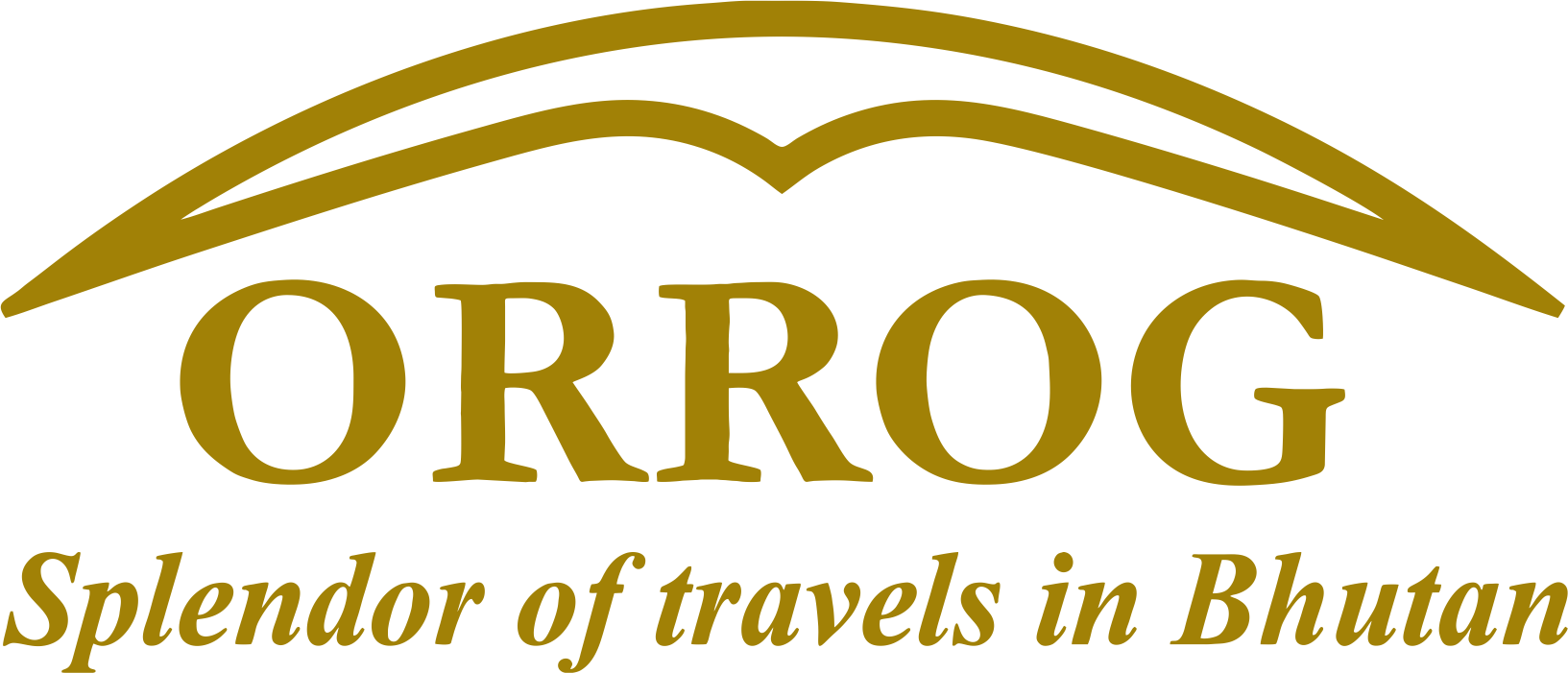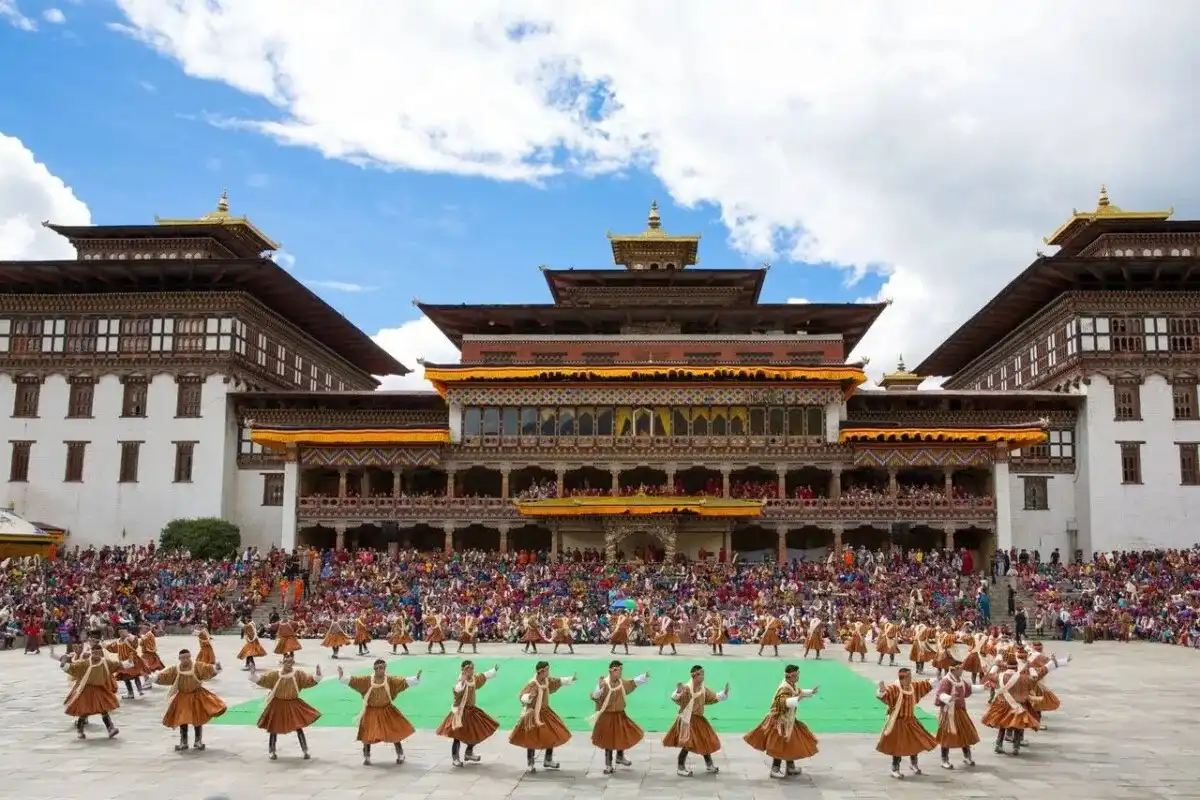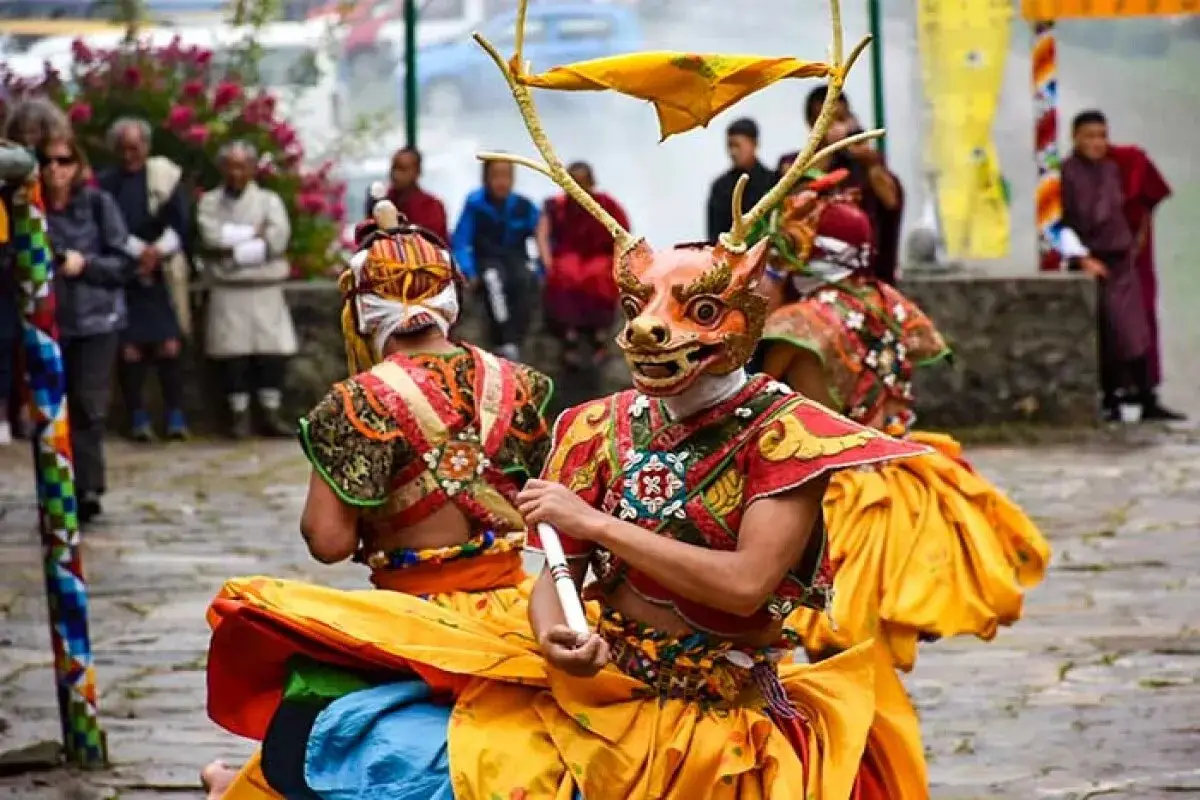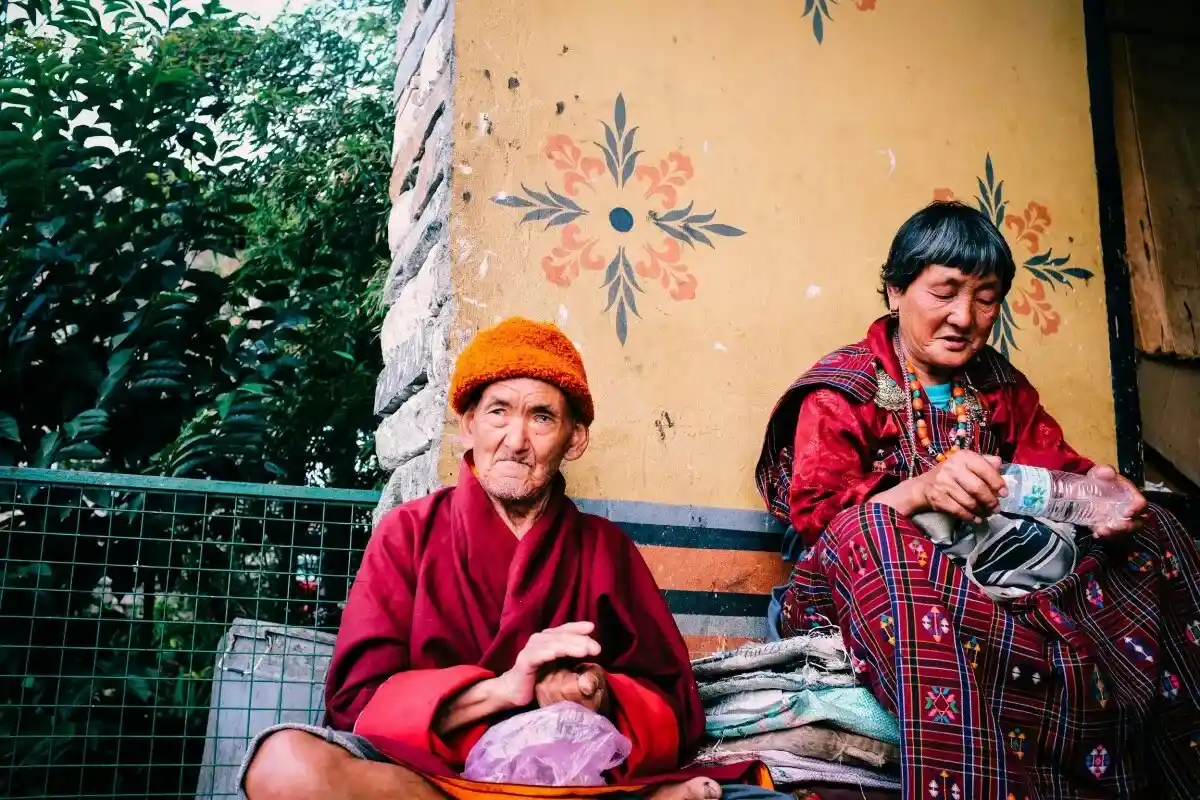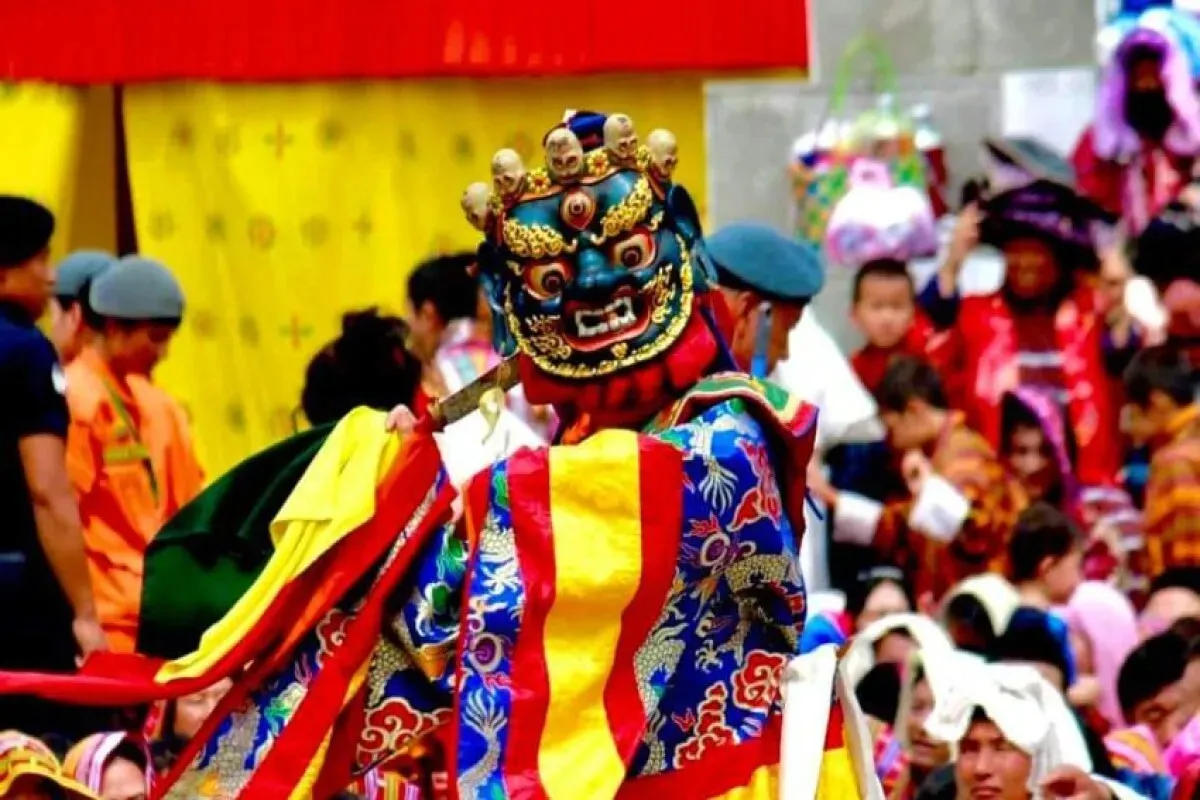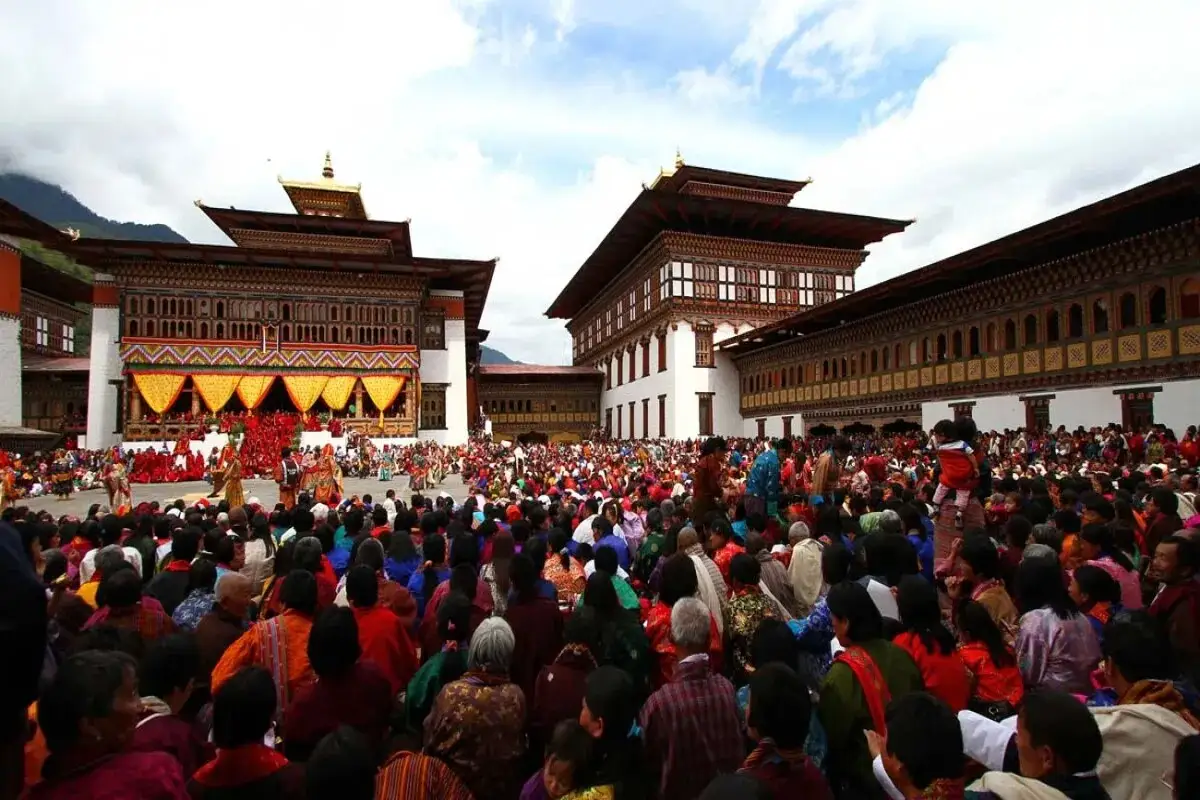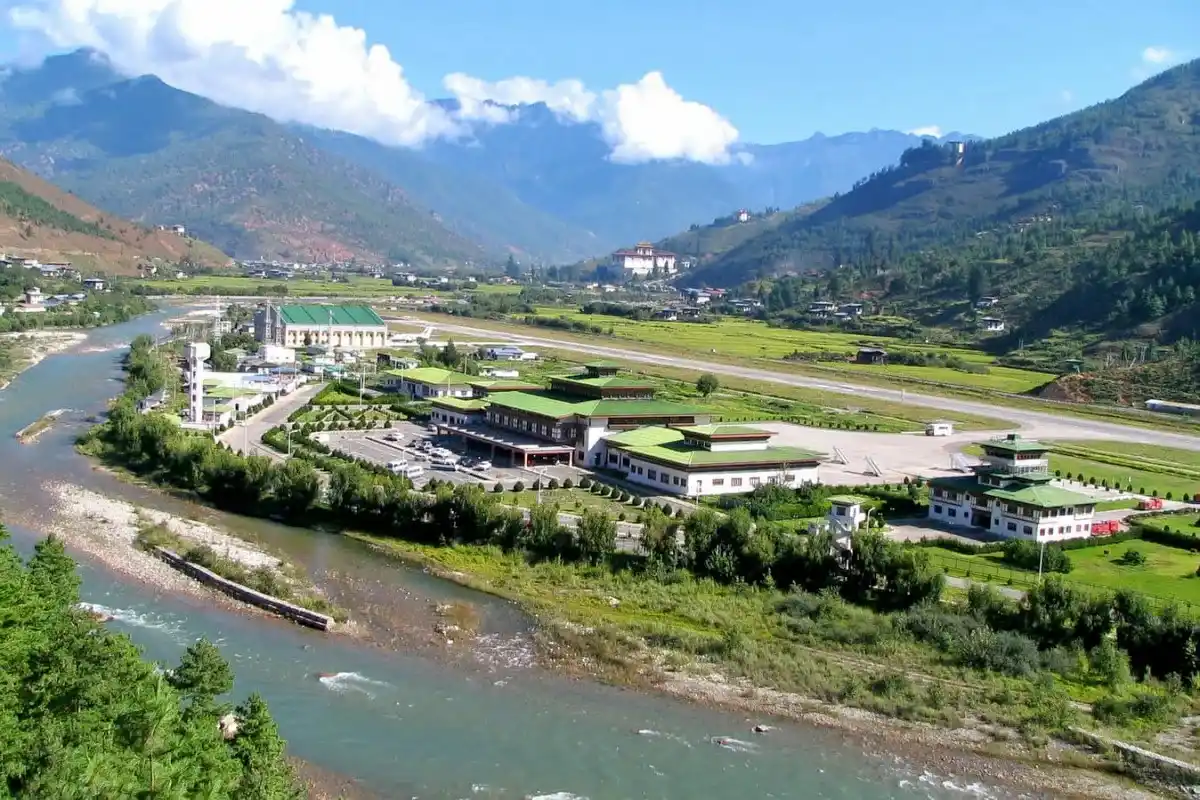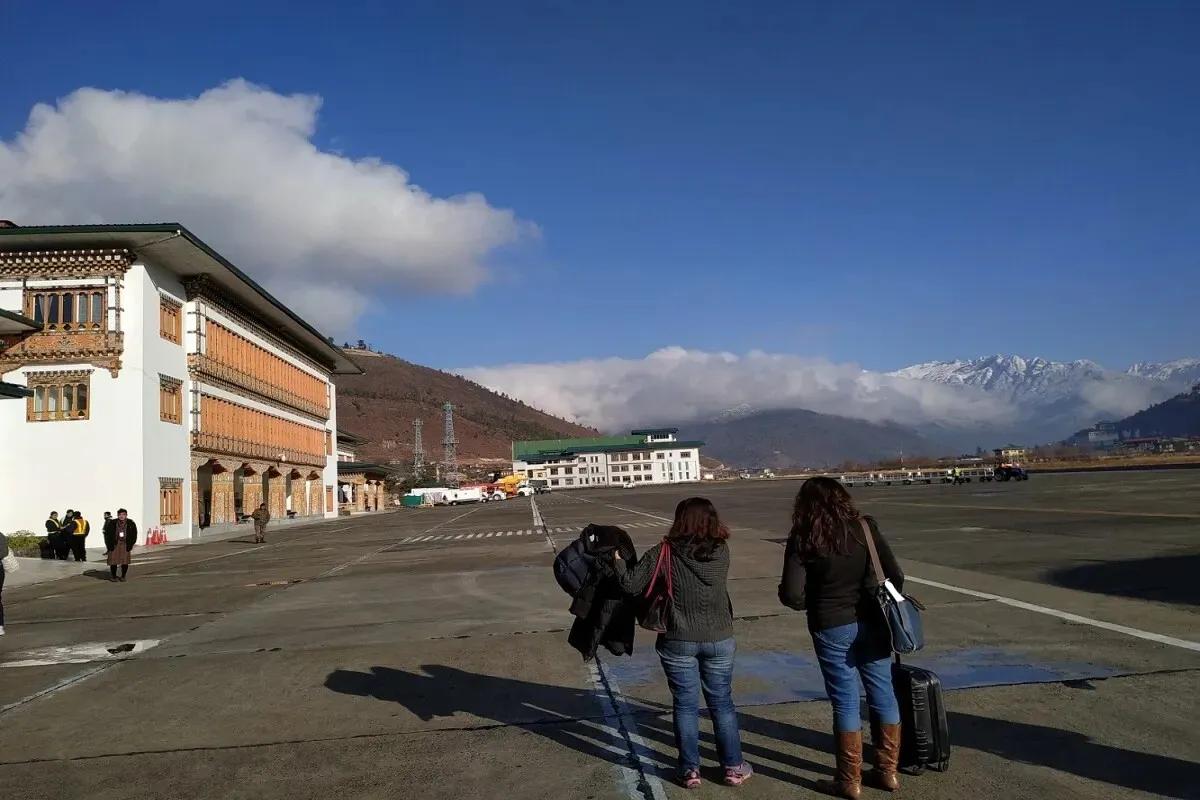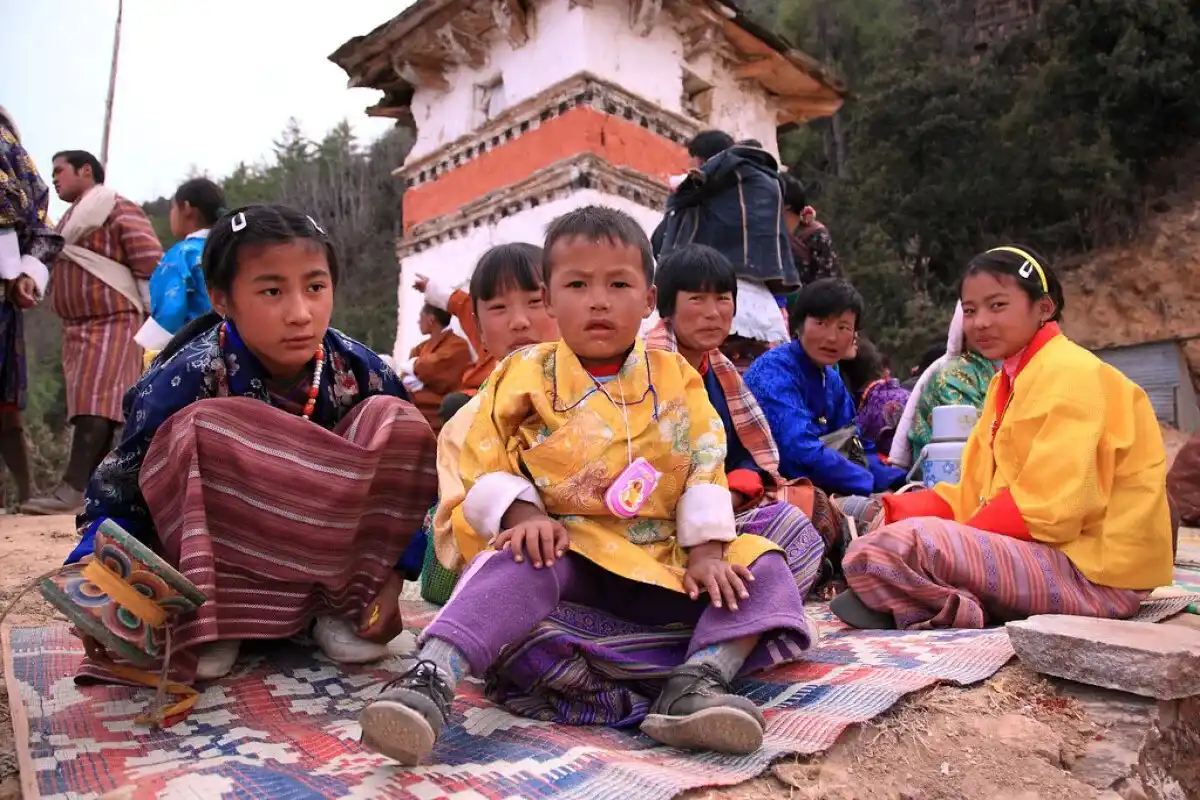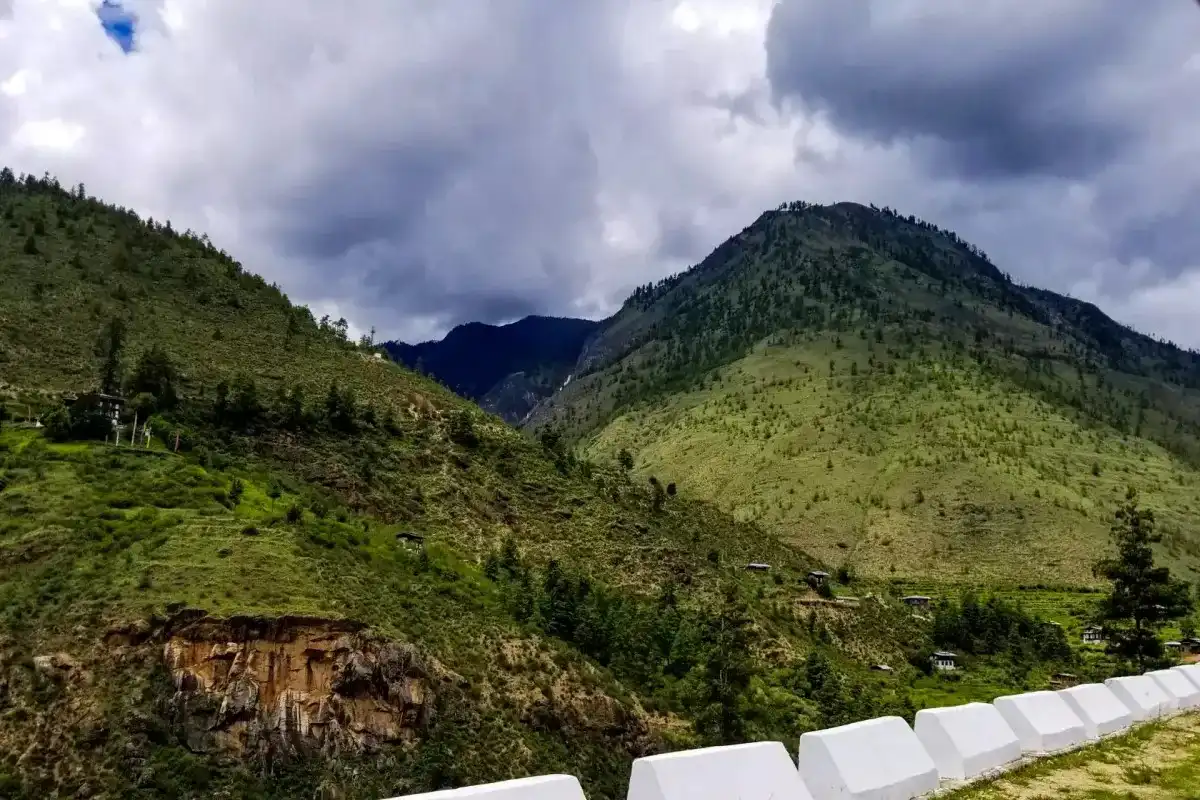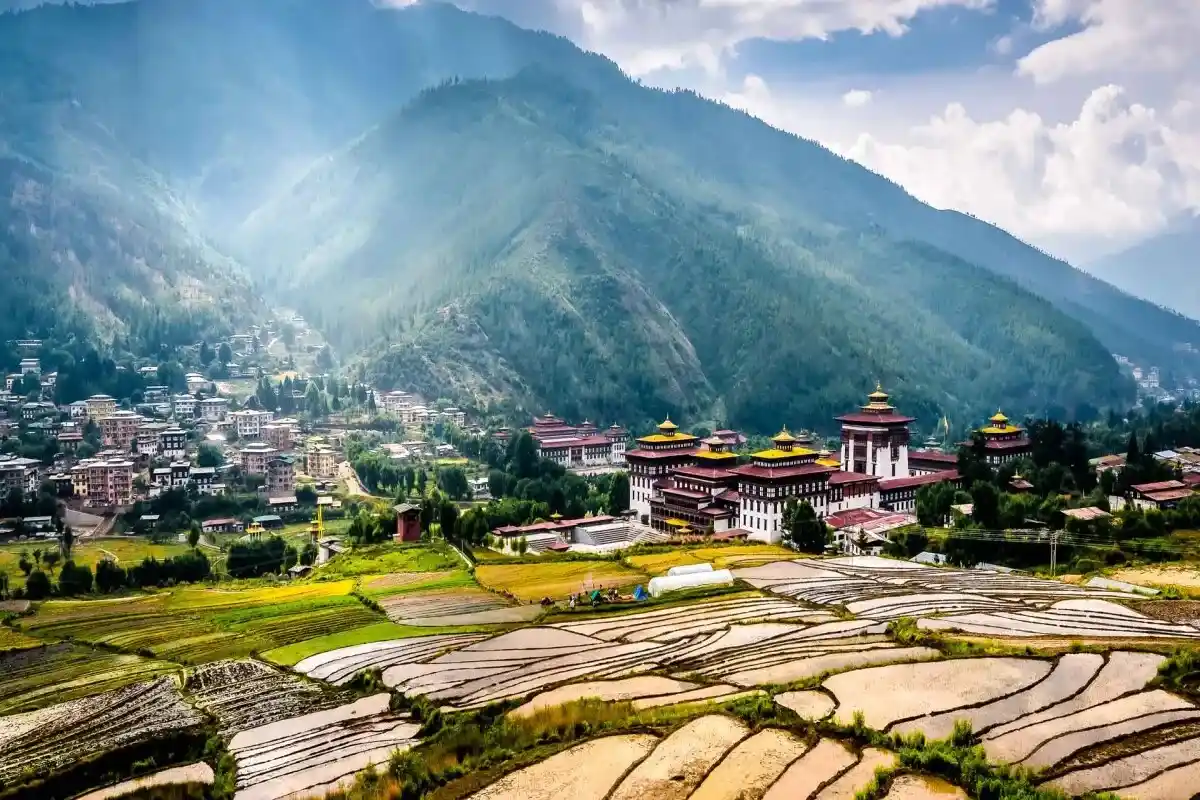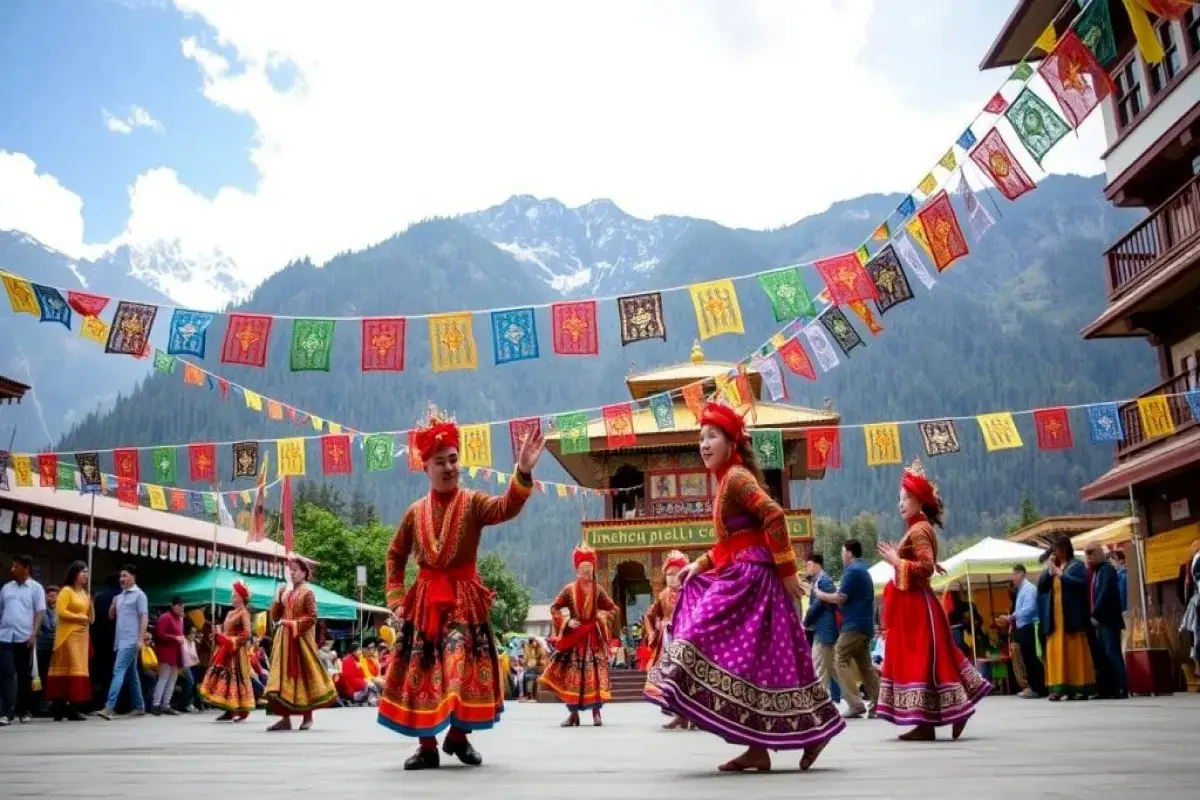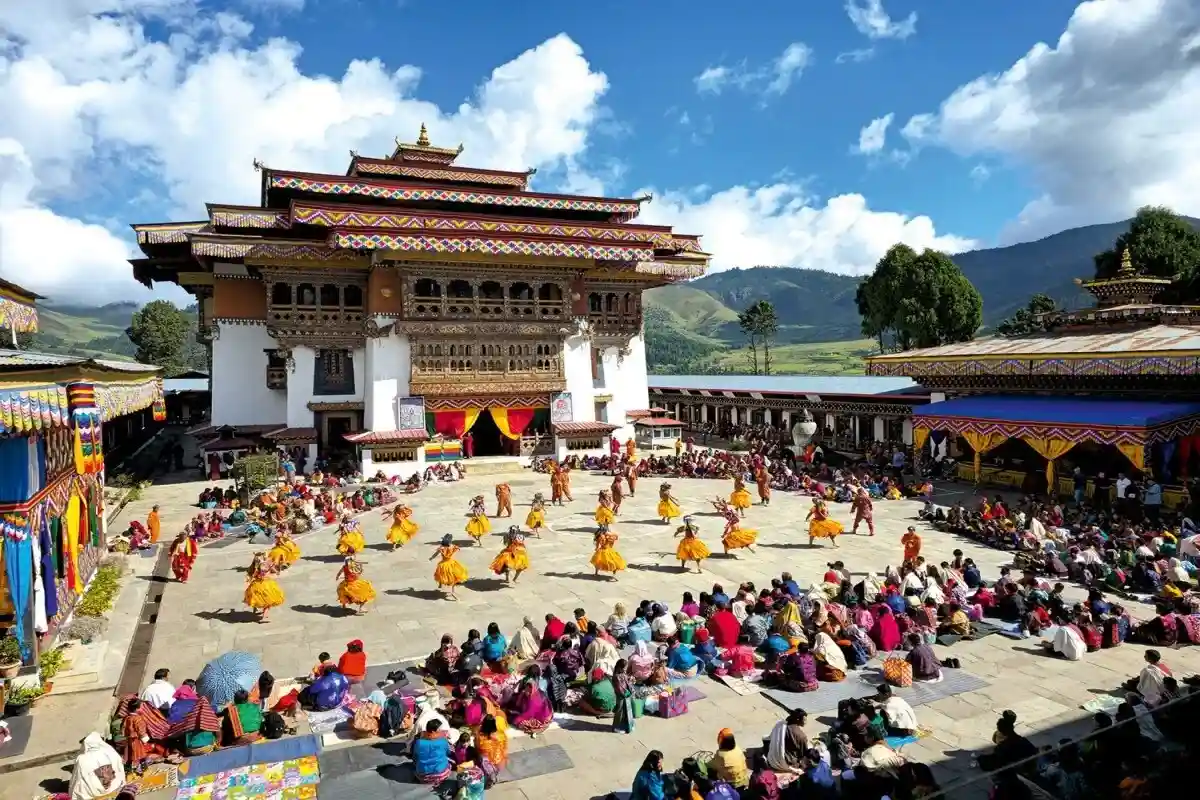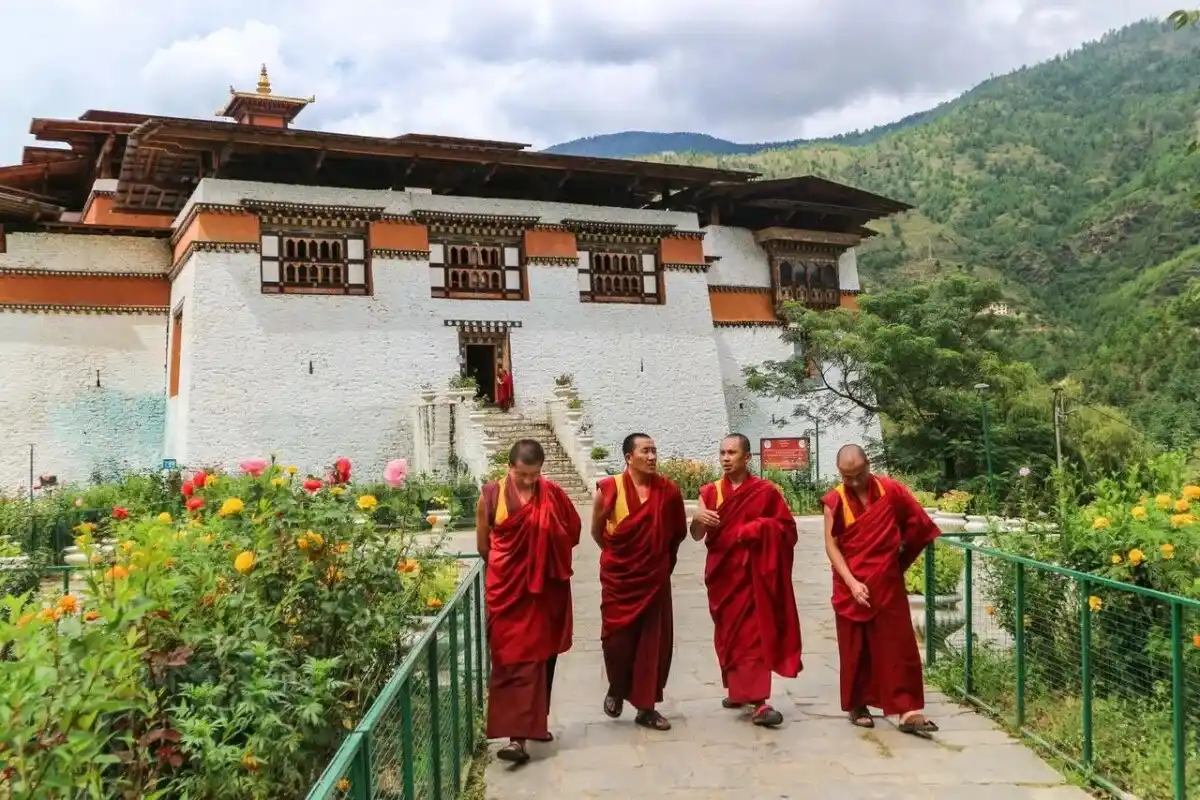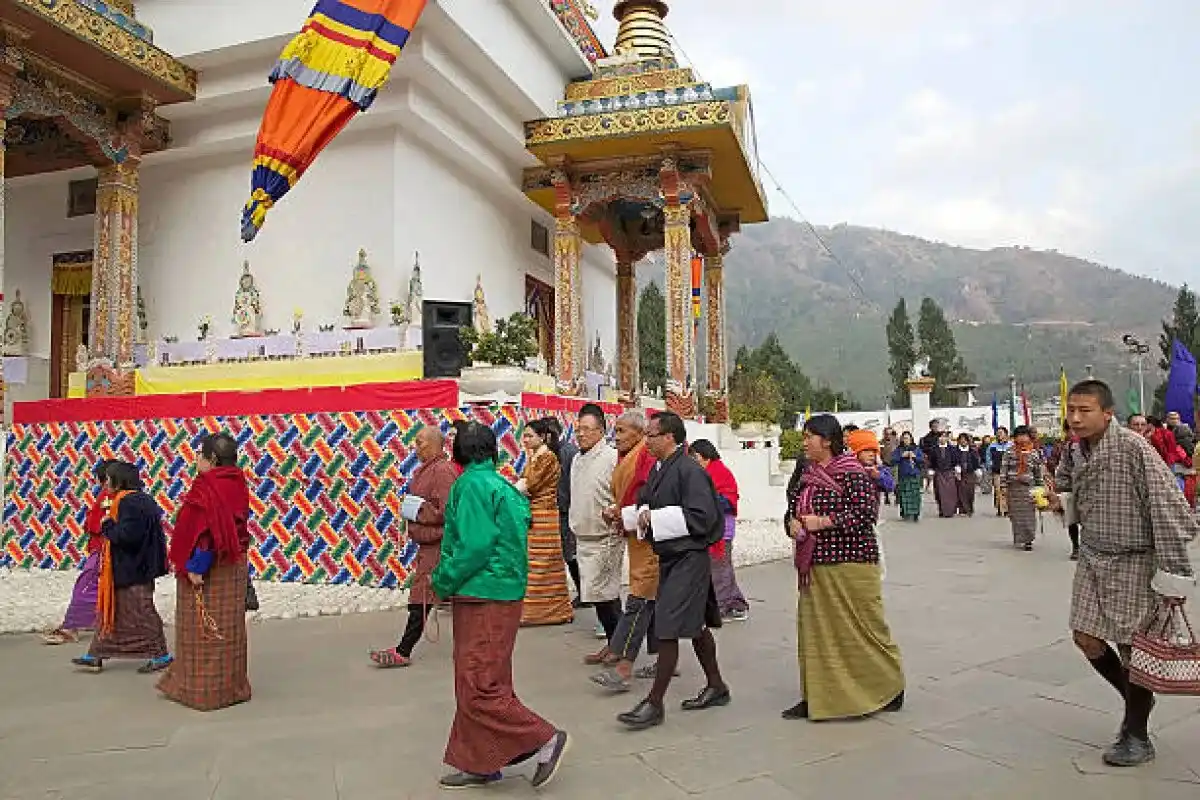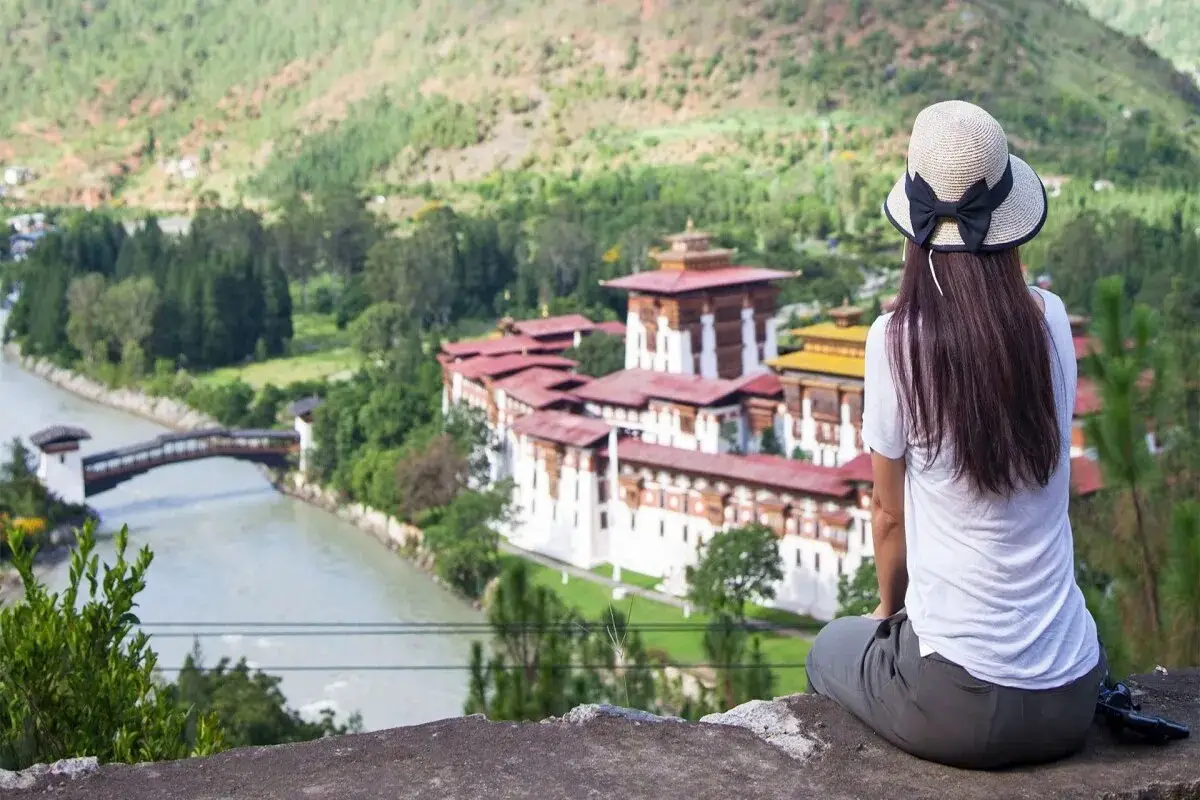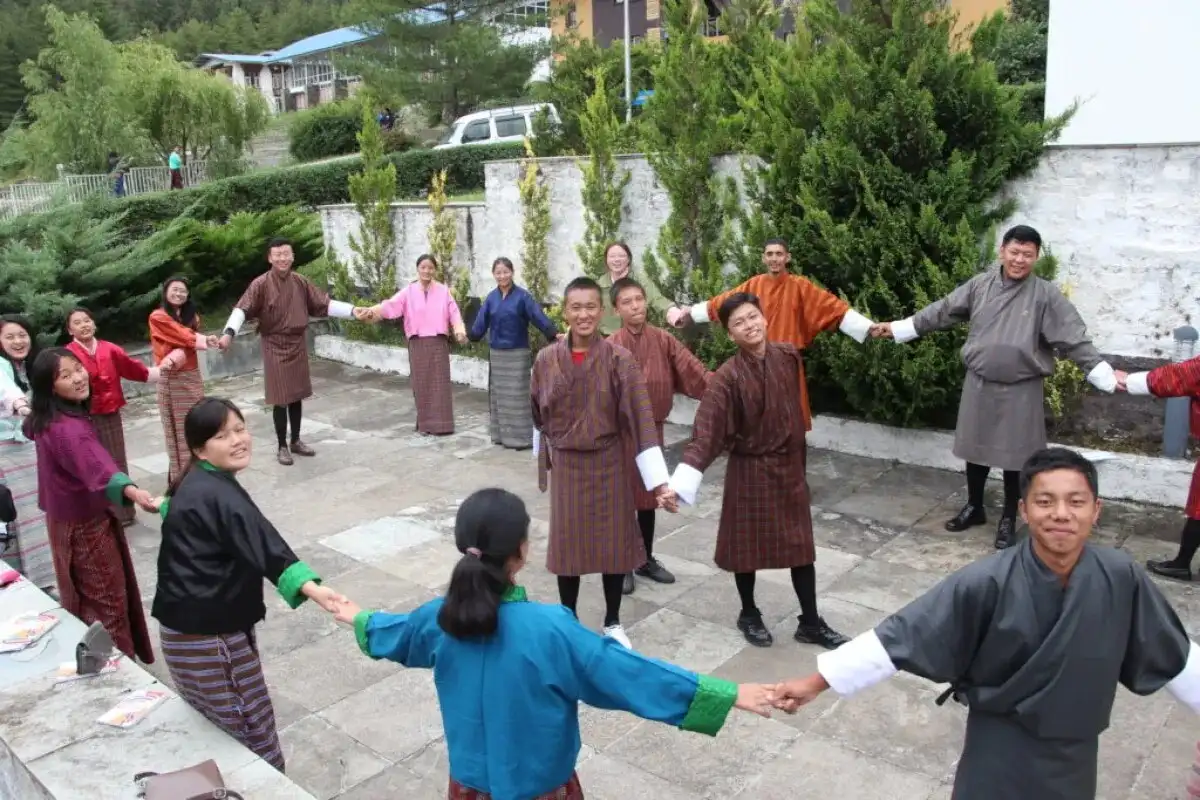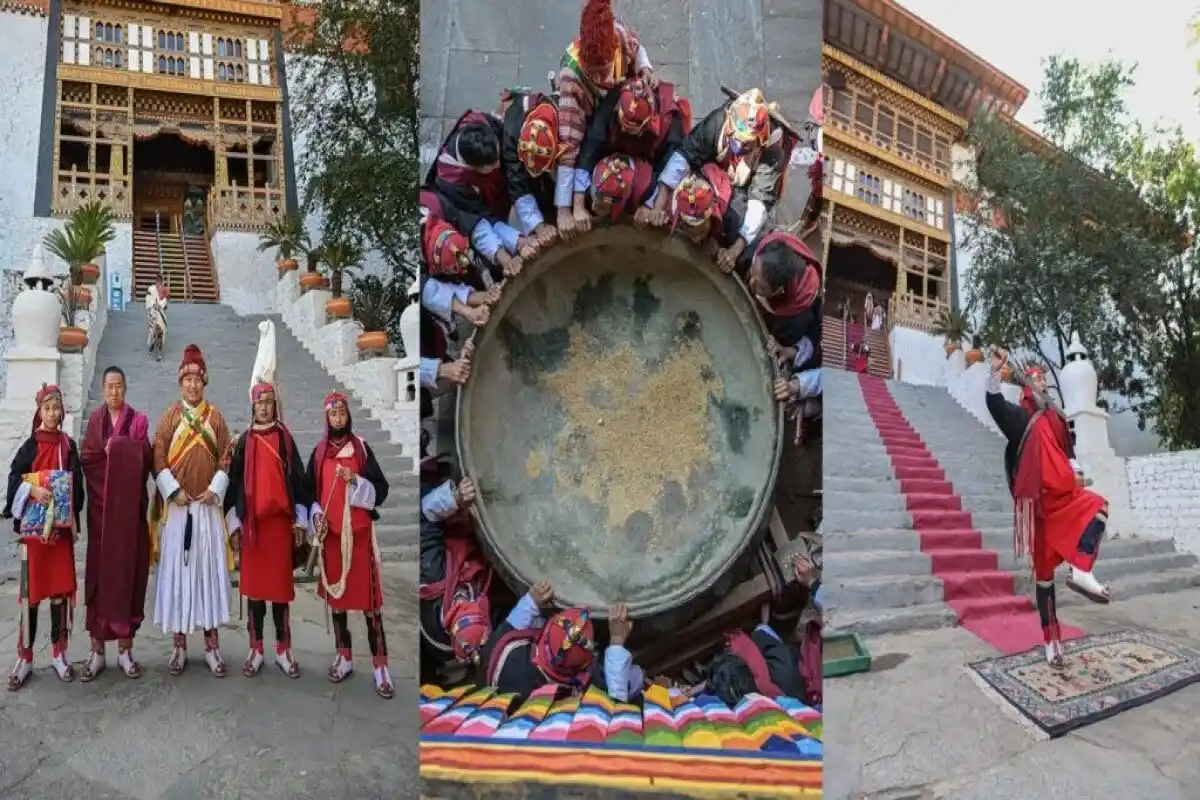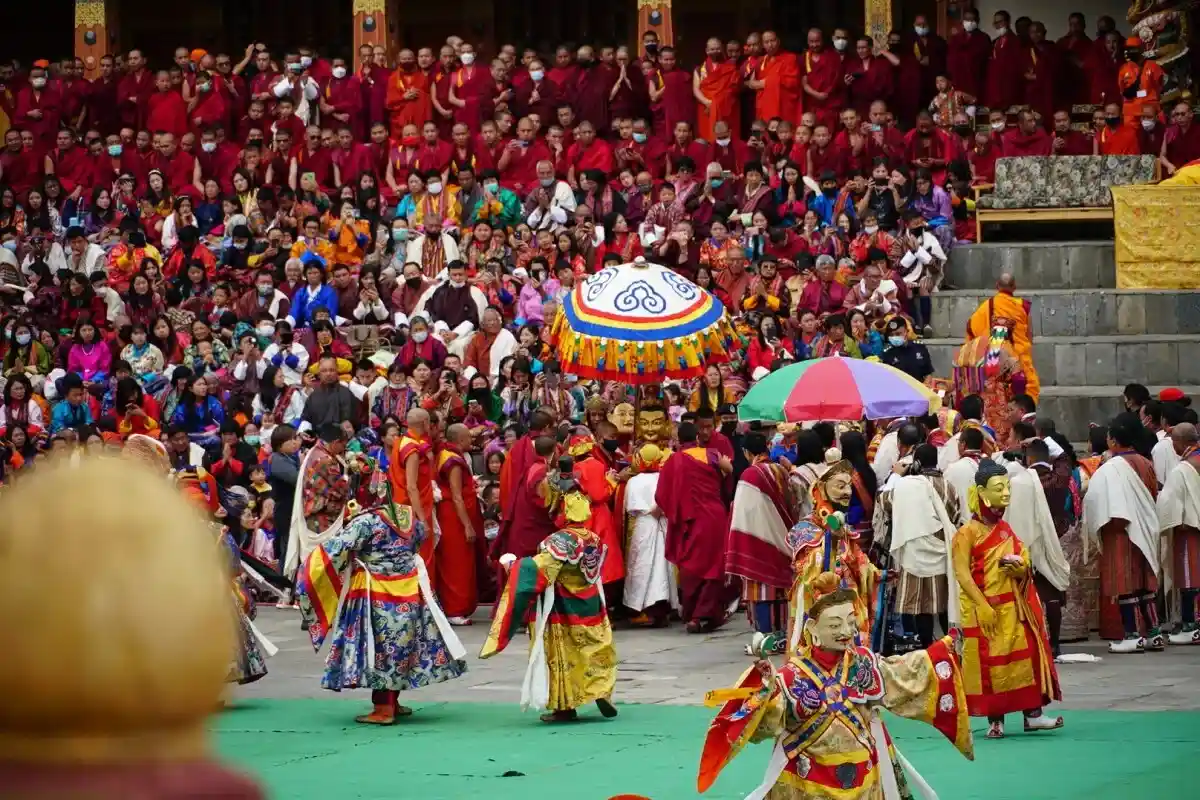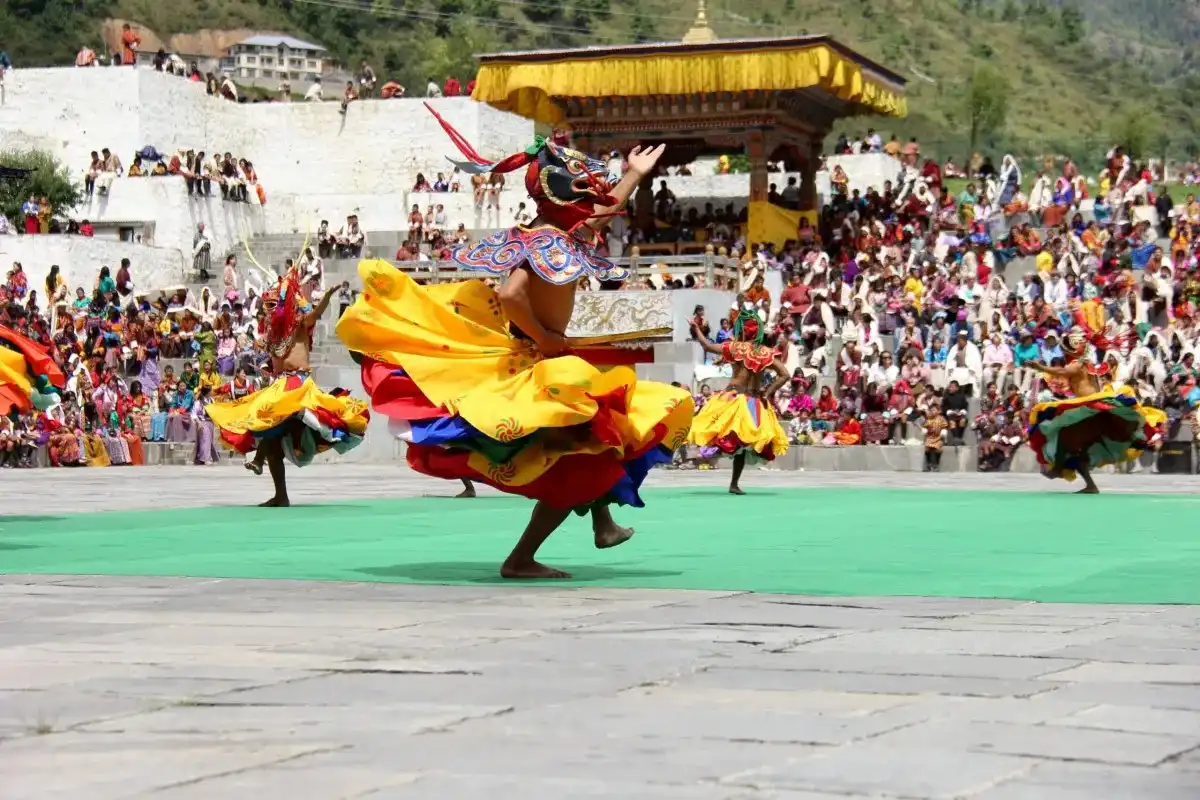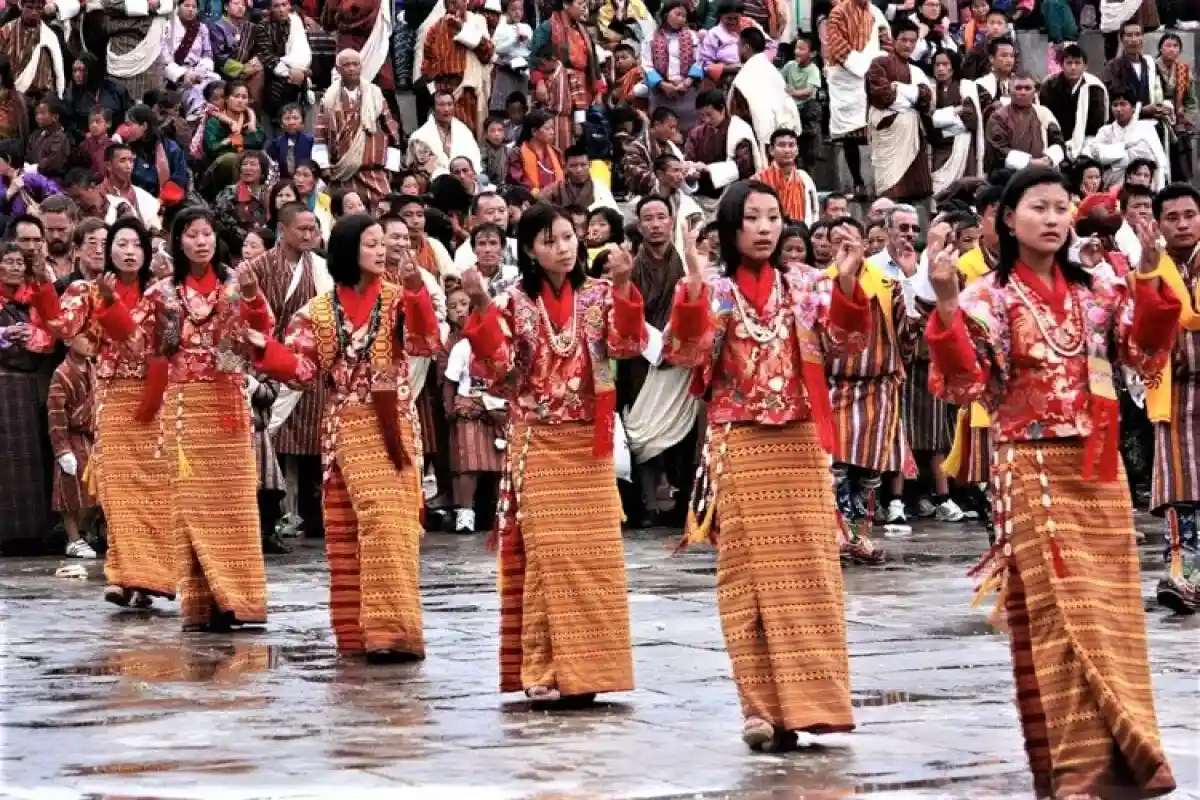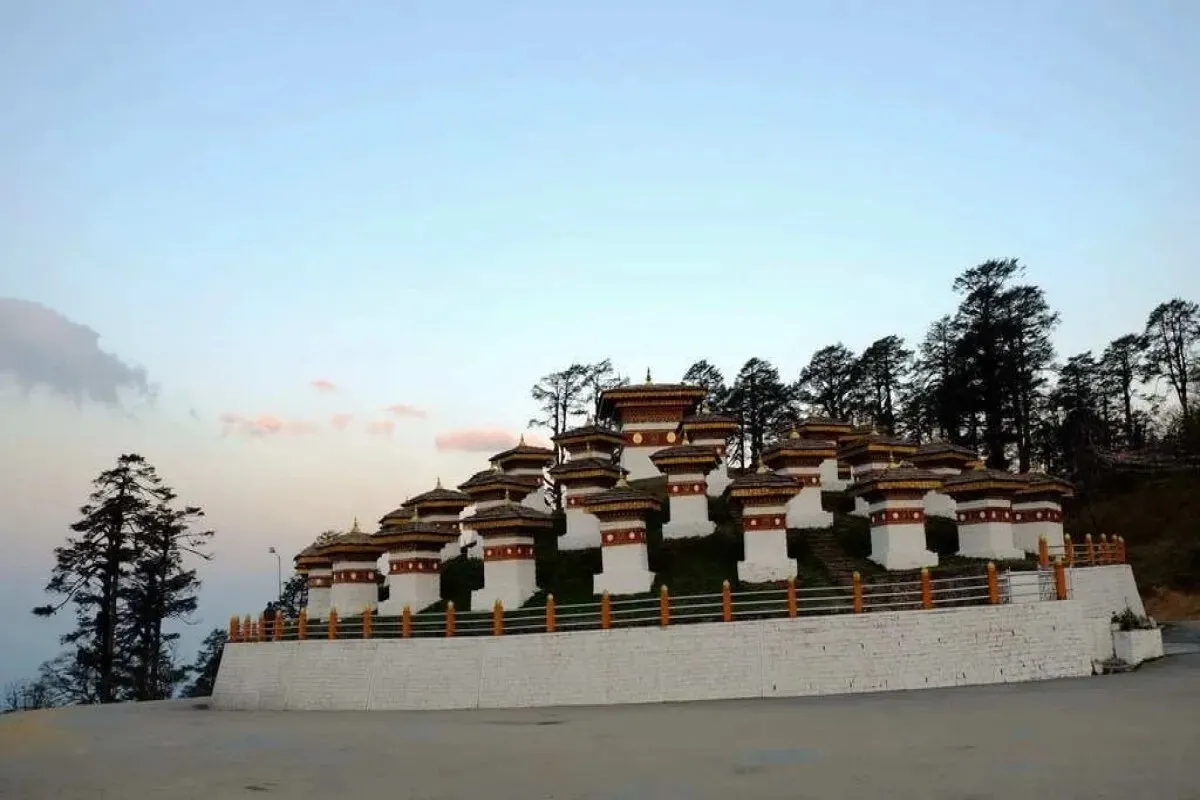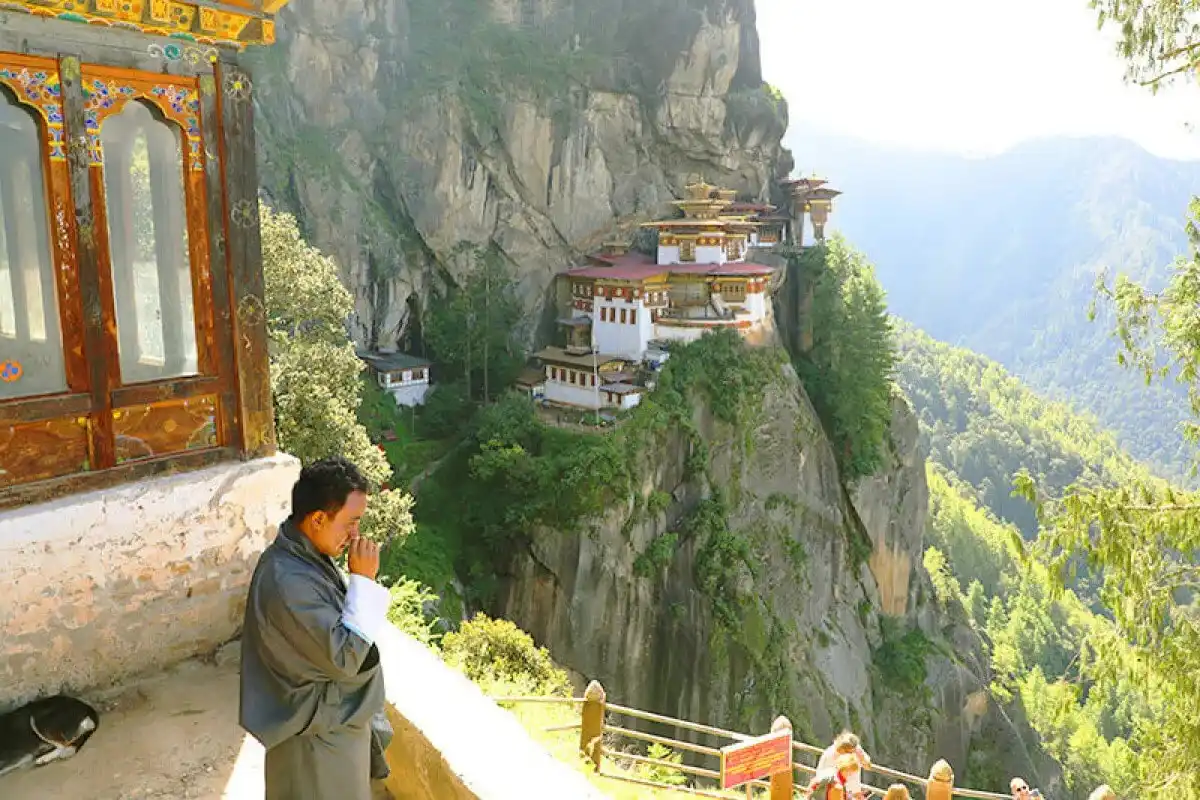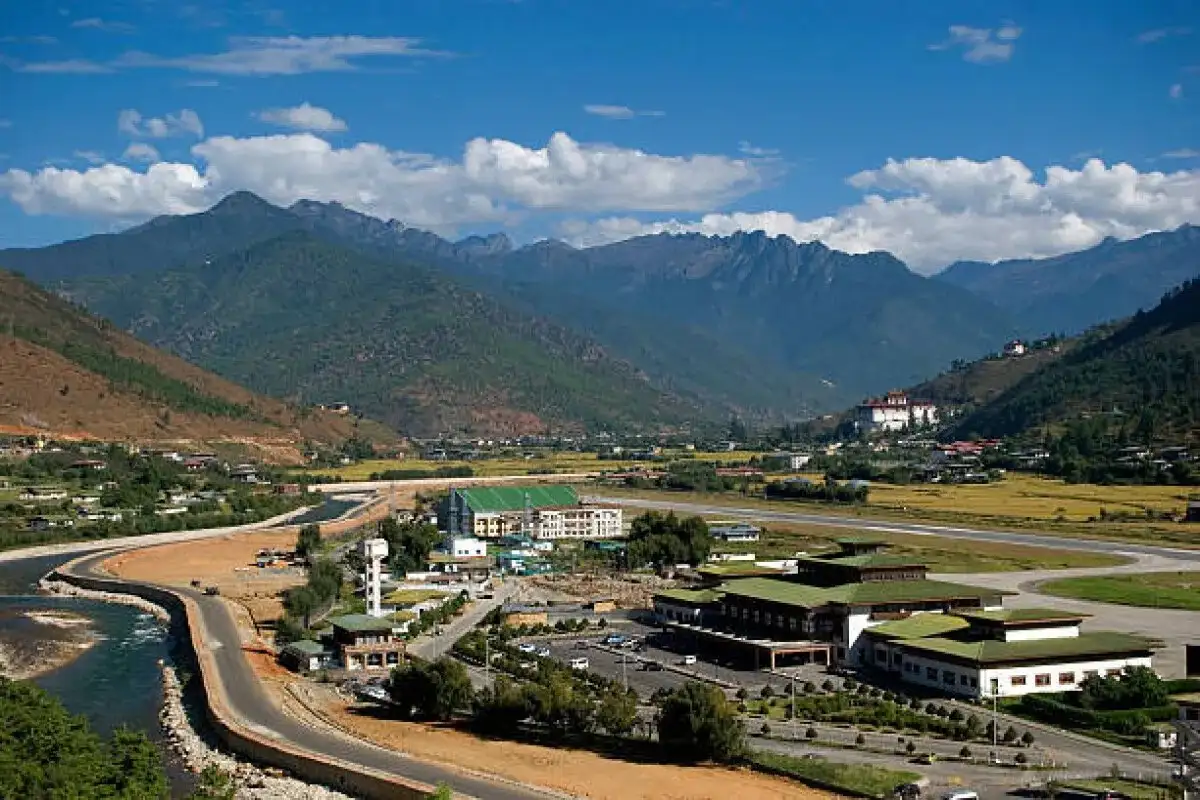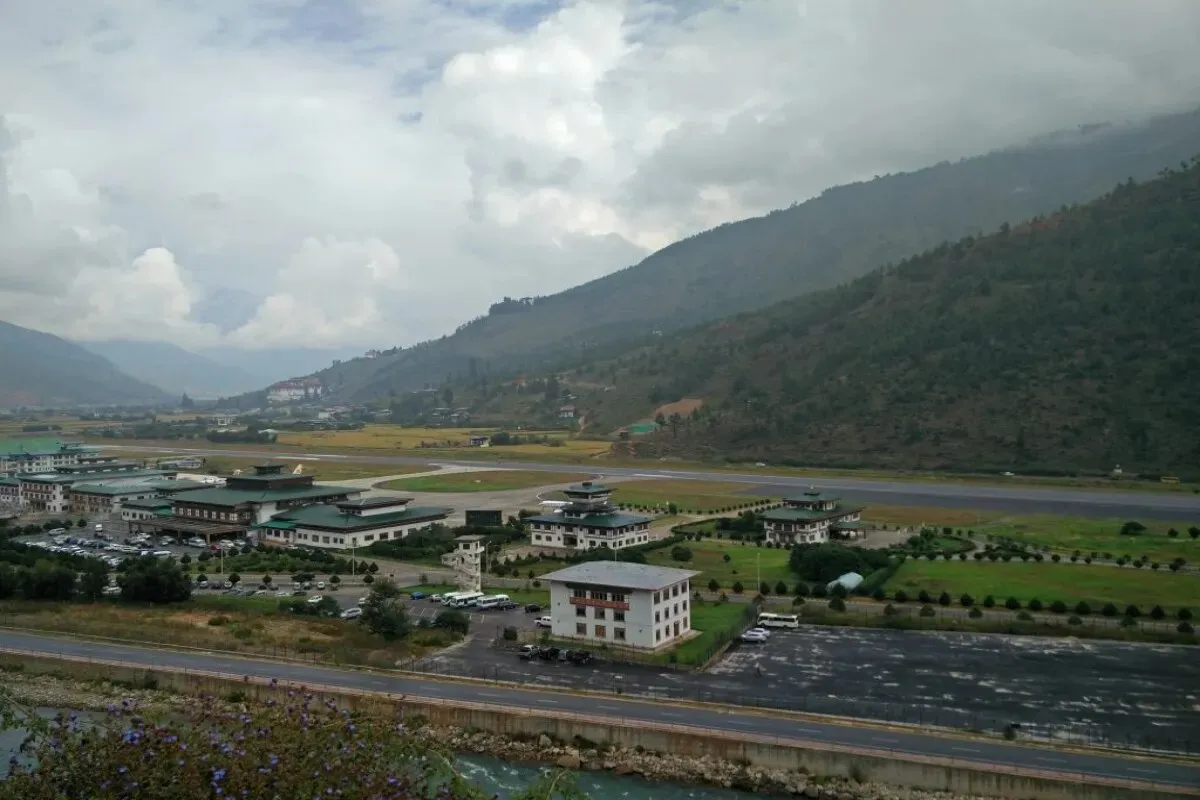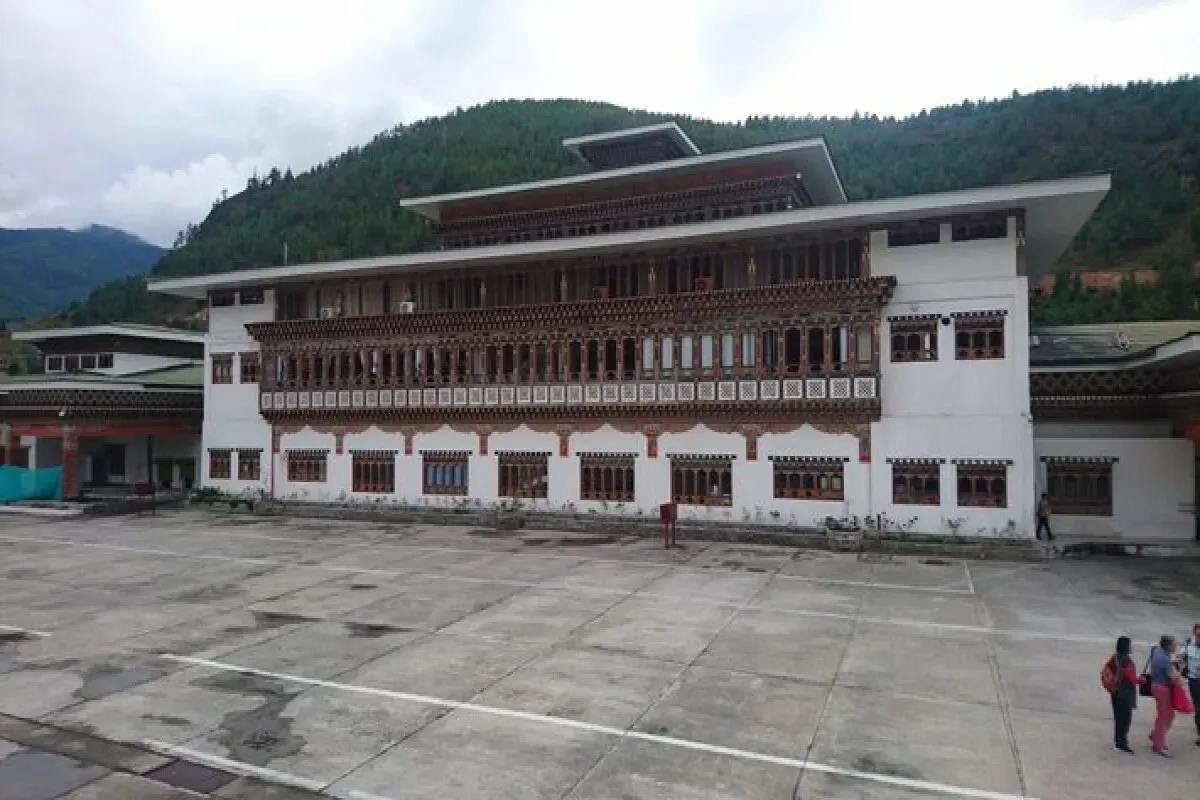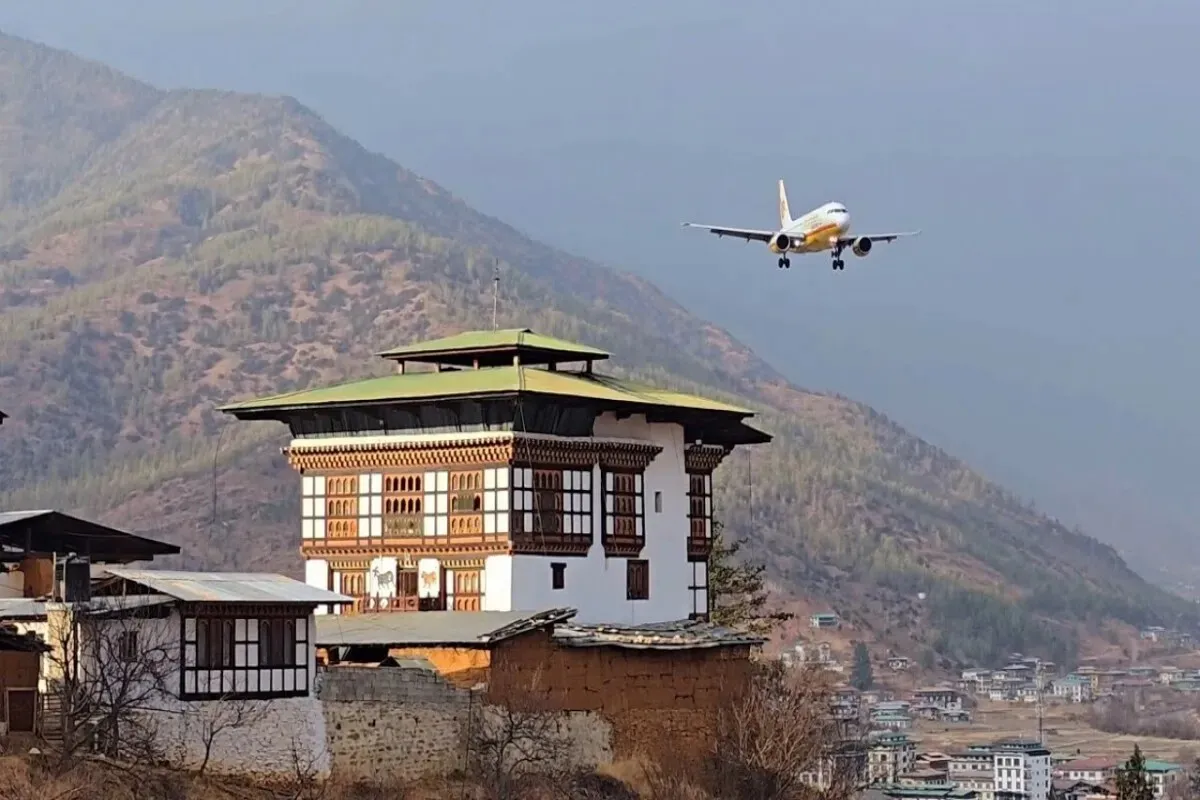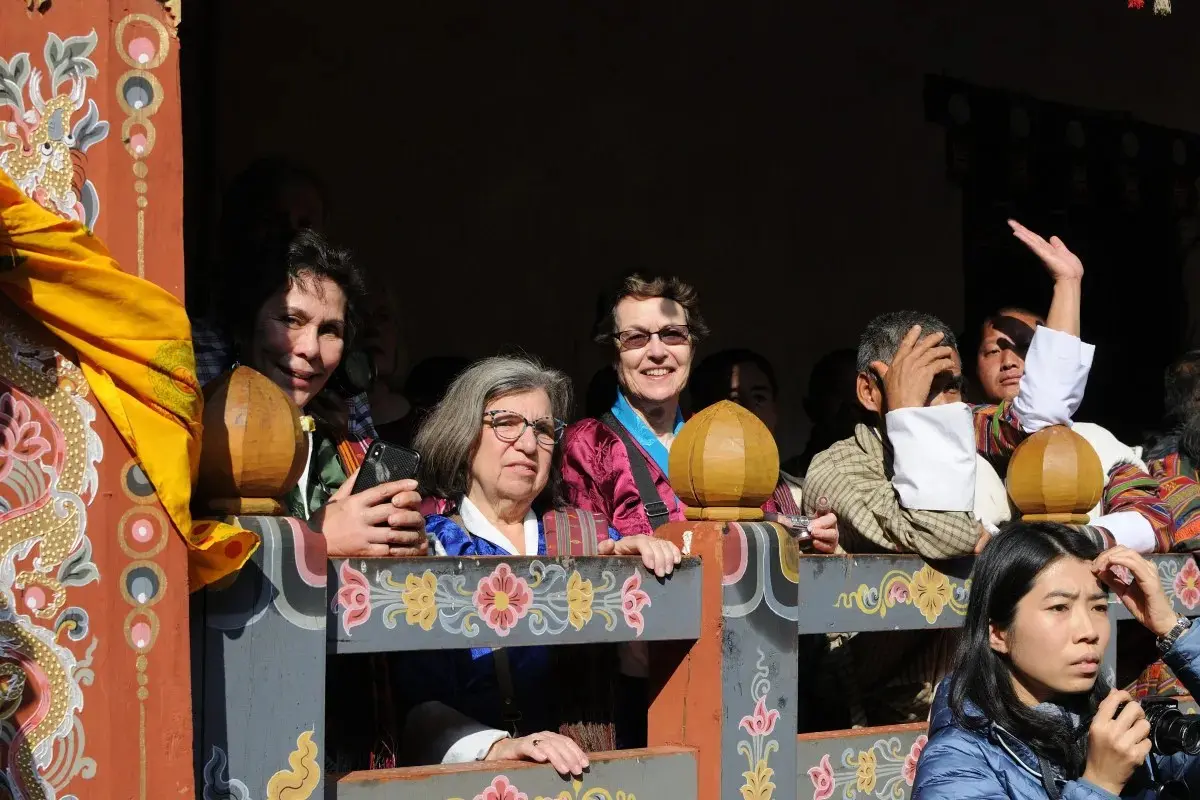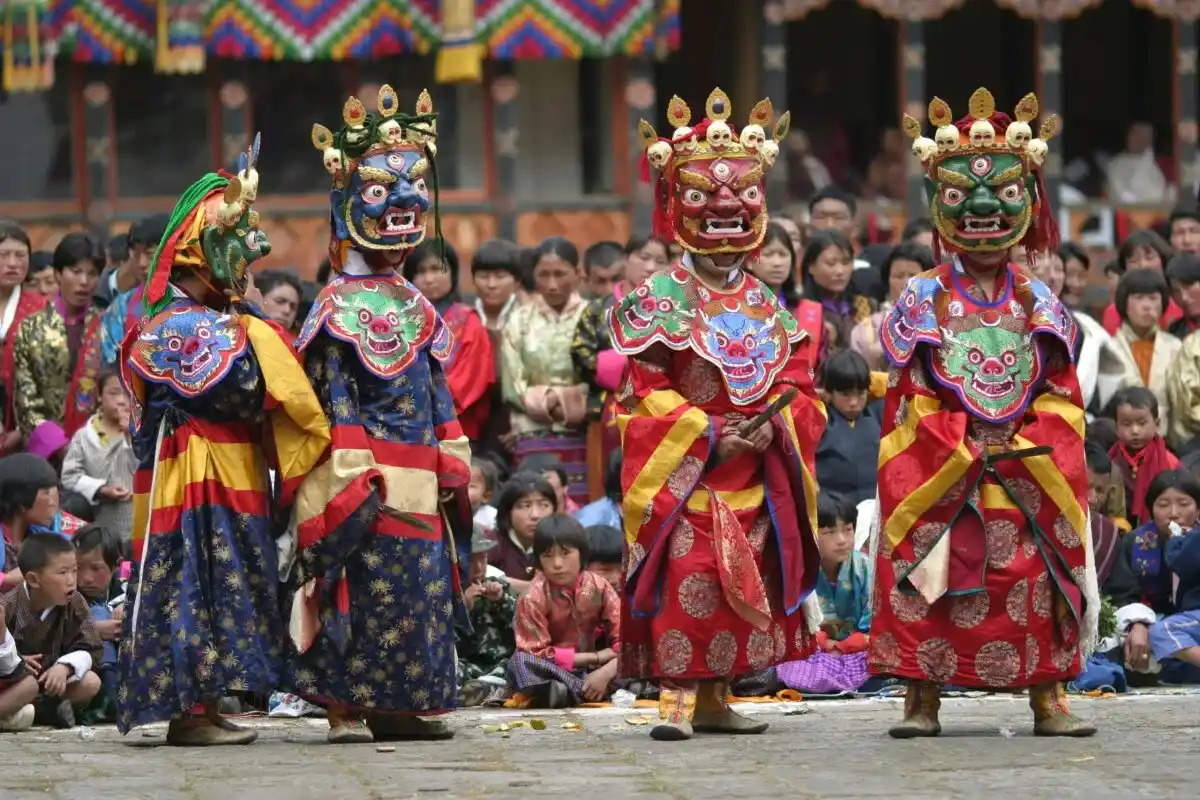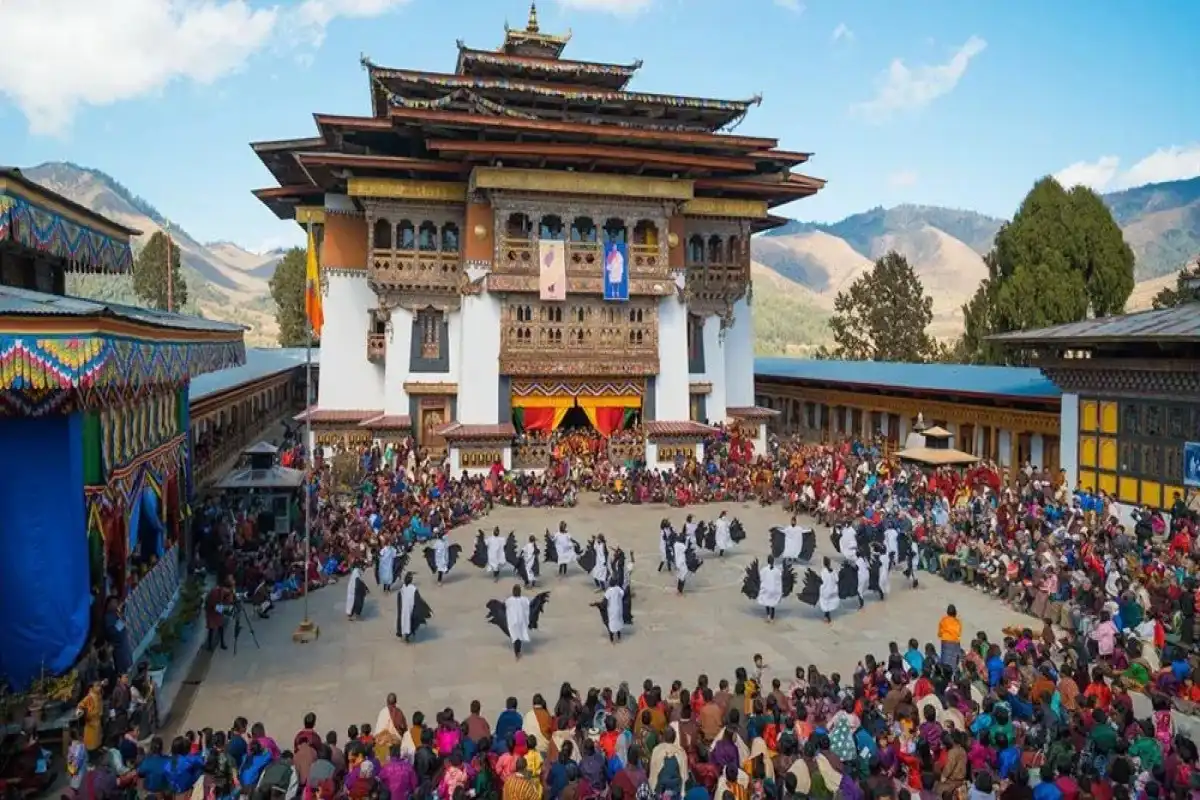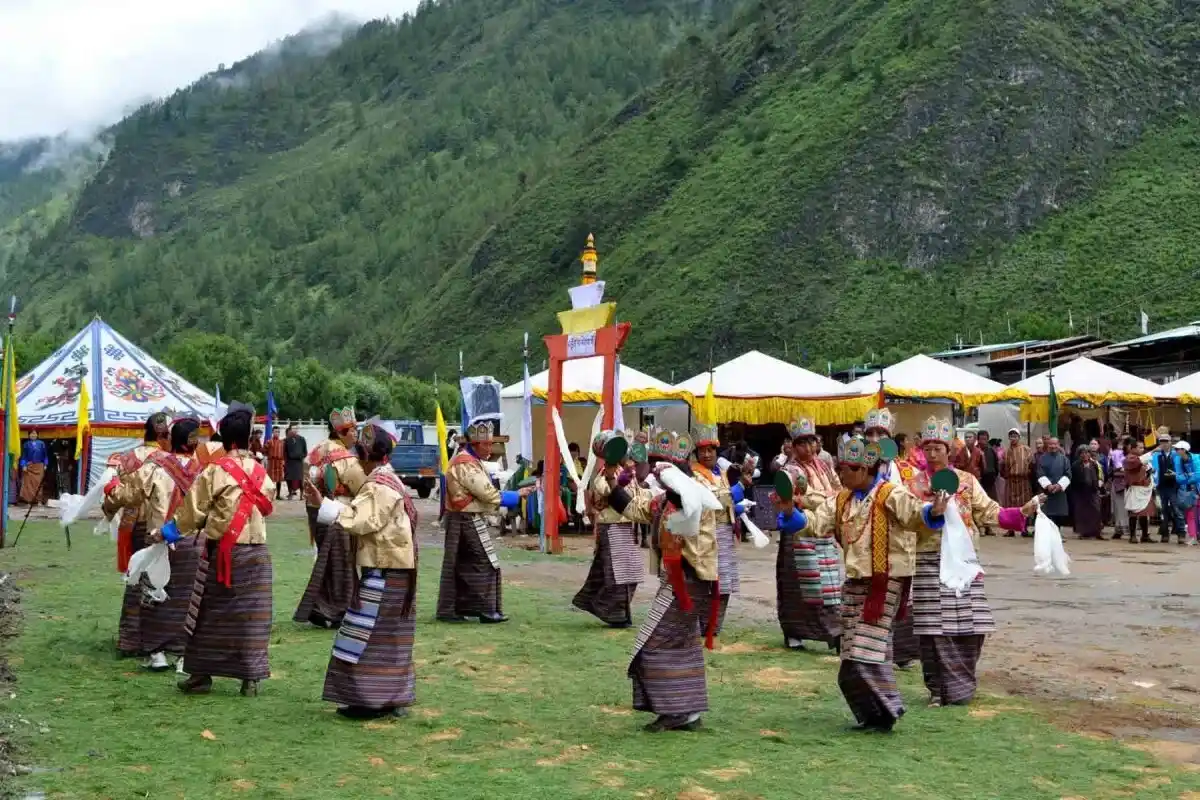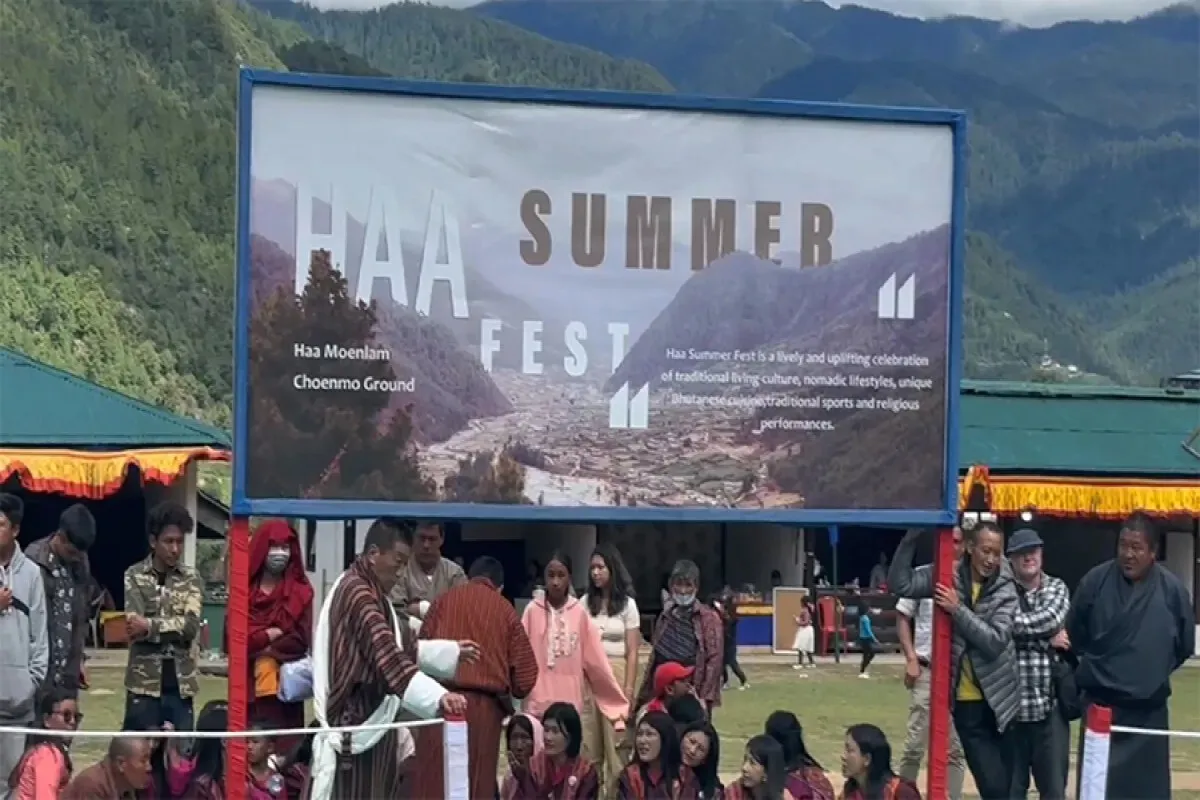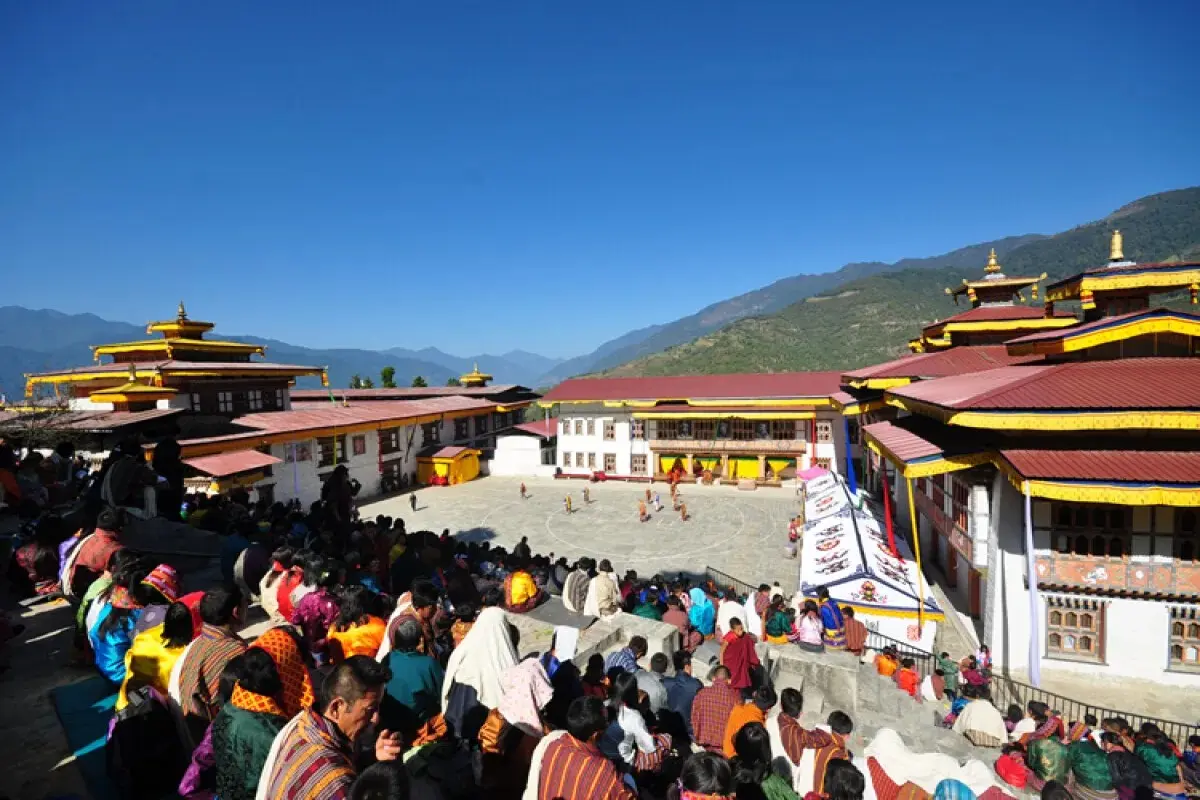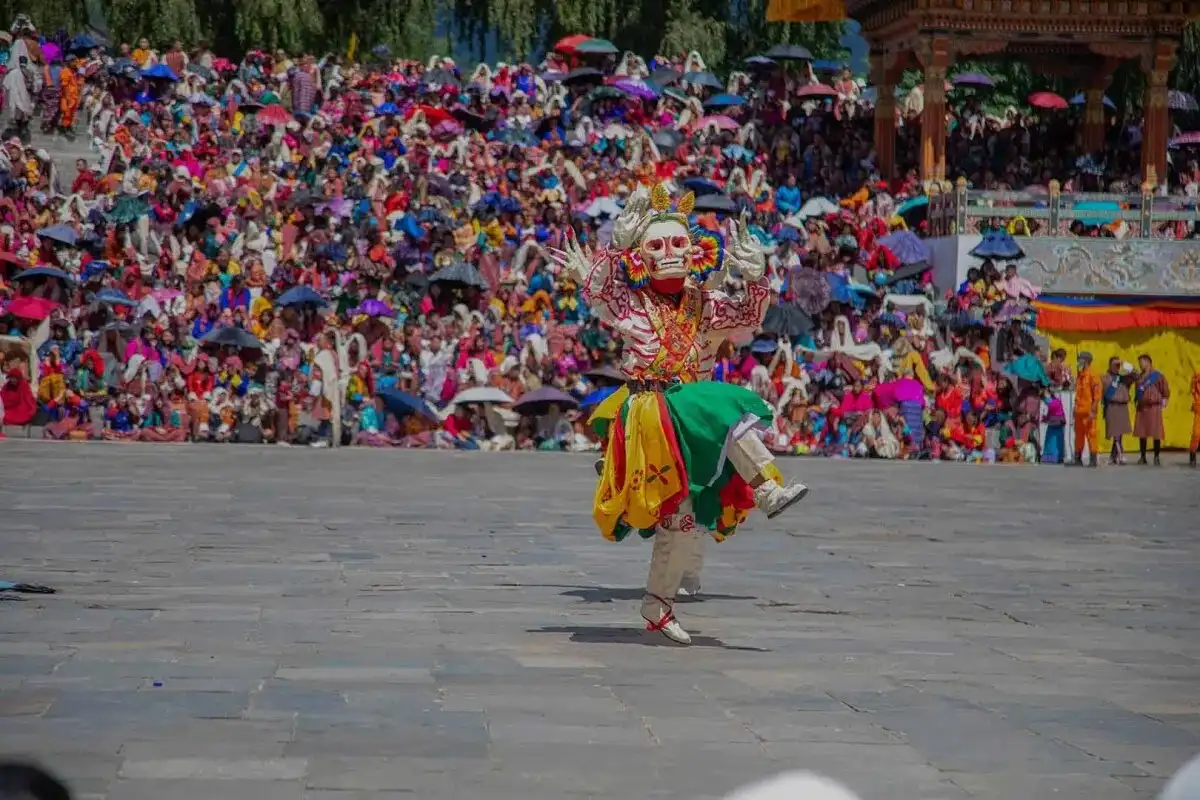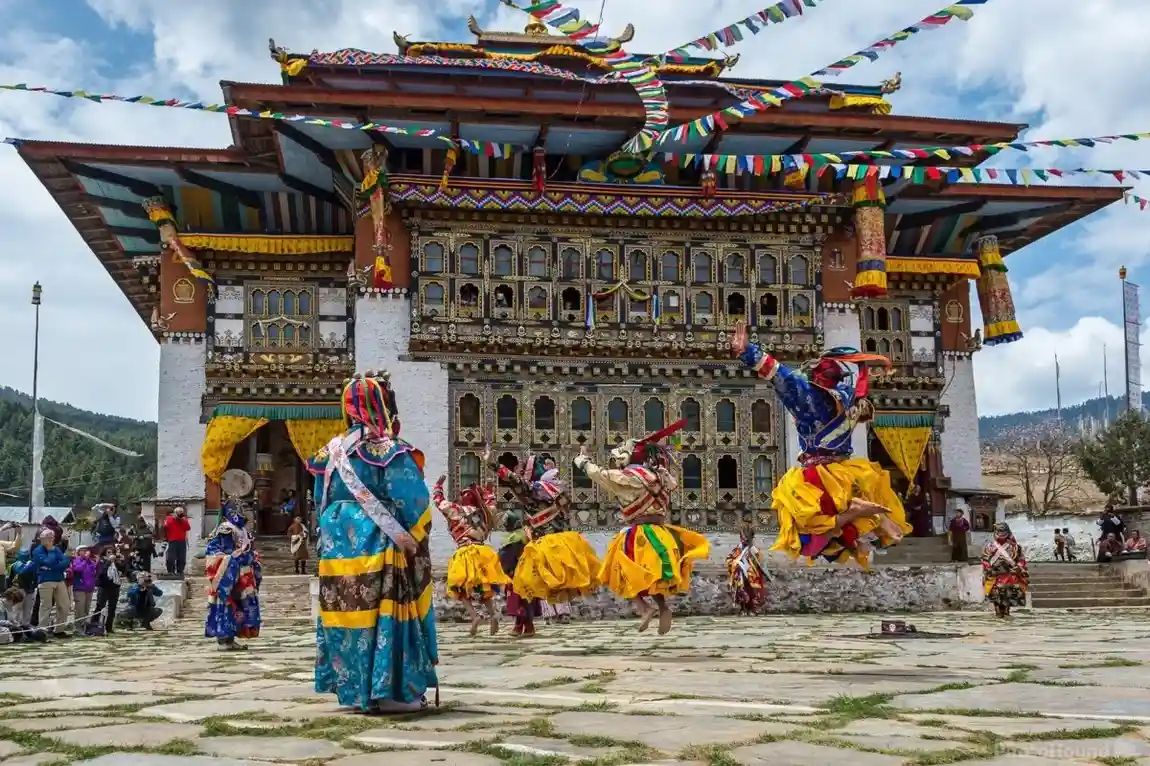Thimphu Tsechu Festival Tour - 7 Days
Experience the vibrant Bhutanese culture at the Thimphu Tsechu Festival, held from October 2nd to 4th at the historic Tashichho Dzong. Whether you travel to Bhutan for major festivals or you are exploring Bhutan for the first time, the Thimphu Tsechu gives an unforgettable journey into the soul of Bhutan.
Highlights
- The Mesmerizing Masked Dances
- The Vibrant Festival Market
- Spiritual Immersion and Cultural Insights
Trip Overview
You could imagine living in a place where masked dances preserve ancient traditions, where horn melodies can be heard all over the mountains, and spirituality meets celebration perfectly. Welcome to Thimphu Tsechu Festival, the most amazing cultural event in Bhutan that people from all over the world have enjoyed for over 150 years.
This year, from October 2nd to 4th, the Tashichho Dzong holds the Thimphu Tsechu festival, which gives everyone a chance to visit Bhutanese culture. For those who are used to traveling and experiencing new places or for those who are trying it for the first time, this festival tour delivers memories you’ll cherish forever.
Quick Facts
- Duration: 7 days
- Best Time to Visit: February - March
- Location: Punakha Dzong, Punakha Valley, Bhutan
- Altitude: 1,200 meters (3,937 feet)
- Difficulty Level: Easy to moderate
Highlights
This Thimphu Tsechu Festival tour is an oppourtunity for exploration of Thimpu's culture and tradition. You will get to experience mask dances and visit different monastries in the Thimpu city. You will have a refreshing moments during this cultural tour.
The Mesmerizing Masked Dances
Thimphu’s Tsechu especially stands out because of its amazing masked dances. Dancers wear colorful outfits and special masks, turning the dzong’s courtyard into a stage for older stories about various beings.
Masked dances are the main reason people come, yet there is much more to see at a Thimphu Tsechu festival. The festival offers you a world of cultural experiences that help you experience real cultural life in Bhutan.
The Vibrant Festival Market
There is a big market at the festival, where traders offer local items, clothes, and tasty country food. Tourists will see this market mainly filled with locals, as they come here to buy food for their families.
Imagine yourself heading through the stands offering handmade products, strong woodwork, and fresh spices as you taste traditional meals like ema datshi or momo dumplings. The market offers many lessons about the traditions of the people in Bhutan.
Spiritual Immersion and Cultural Insights
Attending the Thimphu Tsechu surely provides a unique opportunity to gain cultural insights that go far beyond what any guidebook can offer. You'll see families passing down traditions to their children, see elderly monks sharing wisdom and their learnings with younger generations, and observe the seamless blend of ancient spirituality with modern Bhutanese life.
Watching the festival, you might encounter bonding moments such as a grandmother telling her grandchild why the dance is important, or a concentrated monk doing a prayer ritual that hasn’t changed over the years. They make a normal festival visit into something that truly changes your life and culture.
What Makes Thimphu Tsechu Festival Special?
Every year since 1867, the Thimphu Tsechu festival, which lasts three days, has been held in the Bhutanese capital as a key religious event. Still, it’s not just about its history that separates this event; the festival is amazing because of the energy that comes with so many people celebrating the unique experience together.
More people than at any other festival in Bhutan attend this one to watch the dances and traditions of trained monks in traditional costumes. Lots of families wear their finest traditional dresses while monks in maroon robes pray, and everyone mixes their laughter and prayers with the breeze.
The Significance of the Thimphu Tsechu Festival Celebration
In Bhutan, each year, monasteries and dzongs celebrate Guru Rinpoche’s arrival by arranging the Mask Dance Festival, Tsechu, as a religious event. In the 8th century, Buddhism came to Bhutan because of Padmasambhava, who is widely known as Guru Rinpoche. The entire festival is filled with meaning from spiritual practices.
Such dances are meant for entertainment as well as for relaxing and preparing themselves for their daily roles. All dances are tied to a religious purpose, and generally, they express a victory of goodness over evil. Attending such performances, you become part of practices that have continued in Bhutan for many centuries.
Why Choose a Guided Festival Tour?
It is possible to go alone to the festival, but a guided tour will make the event more enjoyable. Local experts give special insight that helps make performances more meaningful to the audience. They know about the meanings of the masks and dance steps, as well as the history that keeps each performance important in Bhutan nowadays.
Your guide explains the sights and also the background behind them. They often reveal things you could not notice on your own, for instance, the way some dancers interact with the audience, the reason behind particular costume elements, or when old rituals mix with modern joy.
Beyond the Festival: Exploring Thimphu
Besides the main reason to visit, Thimphu has several other cultural places to see and appreciate. In the capital, tourists get insight into current Bhutanese life, though many of the country’s archaic traditions are preserved as well.
Visit the weekend market to check out people’s typical shopping areas, observe the locals at the National Memorial Chorten, and see how the textiles and weaving skills in Bhutan are displayed at the Textile Museum.
By participating in such activities, you can understand how Bhutan’s history still affects today’s way of life.
Booking Your Thimphu Tsechu Festival Tour
Many tourists from across the globe think attending the Thimphu Tsechu festival is one of the most authentic cultural things to do. Many think that these festivals are excellent chances to see Bhutan’s old traditions, thanks in part to the country still keeping its ancient lifestyle.
Life, love, and the spirit of Bhutan are celebrated every second, leaving visitors with memories much richer than during most vacations. Travelers are drawn to the Tsechu festival tour by the interesting dances, spiritual worship, and learning about Bhutan’s ancient customs.
Be sure not to skip this celebration, as it is one of Asia’s most important cultural events. The Thimphu Tsechu set for 2025 will let you experience both the rich wisdom from the past and the energy of today’s Bhutan in perfect unison.
You could imagine living in a place where masked dances preserve ancient traditions, where horn melodies can be heard all over the mountains, and spirituality meets celebration perfectly. Welcome to Thimphu Tsechu Festival, the most amazing cultural event in Bhutan that people from all over the world have enjoyed for over 150 years.
This year, from October 2nd to 4th, the Tashichho Dzong holds the Thimphu Tsechu festival, which gives everyone a chance to visit Bhutanese culture. For those who are used to traveling and experiencing new places or for those who are trying it for the first time, this festival tour delivers memories you’ll cherish forever.
Quick Facts
- Duration: 7 days
- Best Time to Visit: February - March
- Location: Punakha Dzong, Punakha Valley, Bhutan
- Altitude: 1,200 meters (3,937 feet)
- Difficulty Level: Easy to moderate
Highlights
This Thimphu Tsechu Festival tour is an oppourtunity for exploration of Thimpu's culture and tradition. You will get to experience mask dances and visit different monastries in the Thimpu city. You will have a refreshing moments during this cultural tour.
The Mesmerizing Masked Dances
Thimphu’s Tsechu especially stands out because of its amazing masked dances. Dancers wear colorful outfits and special masks, turning the dzong’s courtyard into a stage for older stories about various beings.
Masked dances are the main reason people come, yet there is much more to see at a Thimphu Tsechu festival. The festival offers you a world of cultural experiences that help you experience real cultural life in Bhutan.
The Vibrant Festival Market
There is a big market at the festival, where traders offer local items, clothes, and tasty country food. Tourists will see this market mainly filled with locals, as they come here to buy food for their families.
Imagine yourself heading through the stands offering handmade products, strong woodwork, and fresh spices as you taste traditional meals like ema datshi or momo dumplings. The market offers many lessons about the traditions of the people in Bhutan.
Spiritual Immersion and Cultural Insights
Attending the Thimphu Tsechu surely provides a unique opportunity to gain cultural insights that go far beyond what any guidebook can offer. You'll see families passing down traditions to their children, see elderly monks sharing wisdom and their learnings with younger generations, and observe the seamless blend of ancient spirituality with modern Bhutanese life.
Watching the festival, you might encounter bonding moments such as a grandmother telling her grandchild why the dance is important, or a concentrated monk doing a prayer ritual that hasn’t changed over the years. They make a normal festival visit into something that truly changes your life and culture.
What Makes Thimphu Tsechu Festival Special?
Every year since 1867, the Thimphu Tsechu festival, which lasts three days, has been held in the Bhutanese capital as a key religious event. Still, it’s not just about its history that separates this event; the festival is amazing because of the energy that comes with so many people celebrating the unique experience together.
More people than at any other festival in Bhutan attend this one to watch the dances and traditions of trained monks in traditional costumes. Lots of families wear their finest traditional dresses while monks in maroon robes pray, and everyone mixes their laughter and prayers with the breeze.
The Significance of the Thimphu Tsechu Festival Celebration
In Bhutan, each year, monasteries and dzongs celebrate Guru Rinpoche’s arrival by arranging the Mask Dance Festival, Tsechu, as a religious event. In the 8th century, Buddhism came to Bhutan because of Padmasambhava, who is widely known as Guru Rinpoche. The entire festival is filled with meaning from spiritual practices.
Such dances are meant for entertainment as well as for relaxing and preparing themselves for their daily roles. All dances are tied to a religious purpose, and generally, they express a victory of goodness over evil. Attending such performances, you become part of practices that have continued in Bhutan for many centuries.
Why Choose a Guided Festival Tour?
It is possible to go alone to the festival, but a guided tour will make the event more enjoyable. Local experts give special insight that helps make performances more meaningful to the audience. They know about the meanings of the masks and dance steps, as well as the history that keeps each performance important in Bhutan nowadays.
Your guide explains the sights and also the background behind them. They often reveal things you could not notice on your own, for instance, the way some dancers interact with the audience, the reason behind particular costume elements, or when old rituals mix with modern joy.
Beyond the Festival: Exploring Thimphu
Besides the main reason to visit, Thimphu has several other cultural places to see and appreciate. In the capital, tourists get insight into current Bhutanese life, though many of the country’s archaic traditions are preserved as well.
Visit the weekend market to check out people’s typical shopping areas, observe the locals at the National Memorial Chorten, and see how the textiles and weaving skills in Bhutan are displayed at the Textile Museum.
By participating in such activities, you can understand how Bhutan’s history still affects today’s way of life.
Booking Your Thimphu Tsechu Festival Tour
Many tourists from across the globe think attending the Thimphu Tsechu festival is one of the most authentic cultural things to do. Many think that these festivals are excellent chances to see Bhutan’s old traditions, thanks in part to the country still keeping its ancient lifestyle.
Life, love, and the spirit of Bhutan are celebrated every second, leaving visitors with memories much richer than during most vacations. Travelers are drawn to the Tsechu festival tour by the interesting dances, spiritual worship, and learning about Bhutan’s ancient customs.
Be sure not to skip this celebration, as it is one of Asia’s most important cultural events. The Thimphu Tsechu set for 2025 will let you experience both the rich wisdom from the past and the energy of today’s Bhutan in perfect unison.
Short Itinerary
Arrive in Paro; visit Paro Dzong, National Museum, archery ground, and enjoy a welcome dinner.
Hike to Tiger’s Nest Monastery,Drive to Thimphu and join Tsechu Festival events.
Attend Thimphu Tsechu Festival,Explore festival markets, Buddha Dordenma, and Enjoy traditional dinner.
Drive to Punakha visit Punakha Dzong and Chimi Lhakhang,Return to Thimphu.
Explore Thimphu’s museums, visit farmers’ market.
Drive back to Paro,visit Kyichu Lhakhang and Drukgyel Dzong,enjoy evening farewell celebration.
Departure from Paro and final farewell to Bhutan.
Price Includes
- Pick-up and drop-off services
We provide a pick-up service from the airport to the hotel on your arrival day and from the hotel to the airport on the departure day.
- Lunch, Breakfast, and Dinner
All meals during the trek will be provided by the company. However, personal food items like coffee, tea, cold drinks, etc, are not included in the package.
- A guide proficient in English
A certified, English-speaking guide will accompany you throughout the trip. The guide will offer information about the trail, culture, nature, and history, and ensure your safety and a smooth experience.
- Comfortable SUV vehicle
A private SUV will be used for road travel before or after the trek. These vehicles are ideal for Bhutan’s hilly terrain and provide a comfortable ride.
- All types of entry costs
This covers all permit fees, monument entrance fees, park fees, and any other official charges required for trekking or sightseeing activities during the tour.
- Professional Drive
We ensure a safe and smooth drive during your tour. We have licensed and experienced drivers for that.
- Sleeping bag and tent
Quality sleeping bags and tents are provided for your comfort and warmth during the camping nights on the trek. So, you don’t have to worry about buying a new one.
- Farewell dinner
A special farewell meal, typically arranged in a traditional restaurant, is offered at the end of the tour to celebrate the journey and thank the participants.
- Evening Tea/coffee with snacks
Each evening, you’ll be served tea or coffee along with light snacks like biscuits and popcorn.
- Drinking Water
Safe and clean drinking water is provided throughout the trek.
- Pick-up and drop-off services
We provide a pick-up service from the airport to the hotel on your arrival day and from the hotel to the airport on the departure day.
- Lunch, Breakfast, and Dinner
All meals during the trek will be provided by the company. However, personal food items like coffee, tea, cold drinks, etc, are not included in the package.
- A guide proficient in English
A certified, English-speaking guide will accompany you throughout the trip. The guide will offer information about the trail, culture, nature, and history, and ensure your safety and a smooth experience.
- Comfortable SUV vehicle
A private SUV will be used for road travel before or after the trek. These vehicles are ideal for Bhutan’s hilly terrain and provide a comfortable ride.
- All types of entry costs
This covers all permit fees, monument entrance fees, park fees, and any other official charges required for trekking or sightseeing activities during the tour.
- Professional Drive
We ensure a safe and smooth drive during your tour. We have licensed and experienced drivers for that.
- Sleeping bag and tent
Quality sleeping bags and tents are provided for your comfort and warmth during the camping nights on the trek. So, you don’t have to worry about buying a new one.
- Farewell dinner
A special farewell meal, typically arranged in a traditional restaurant, is offered at the end of the tour to celebrate the journey and thank the participants.
- Evening Tea/coffee with snacks
Each evening, you’ll be served tea or coffee along with light snacks like biscuits and popcorn.
- Drinking Water
Safe and clean drinking water is provided throughout the trek.
Price Excludes
- International Airfare
- Visa Charges and Insurance
- Individual expenditures
- Additional-day lodging
- Laundry and telephone expenses
- Tips for the guide and the porter
- International Airfare
- Visa Charges and Insurance
- Individual expenditures
- Additional-day lodging
- Laundry and telephone expenses
- Tips for the guide and the porter
Thimphu Tsechu Festival Tour Itinerary
As you arrive at Paro International Airport, someone from your trip guide will welcome you and offer you butter tea and other native snacks. Your cultural experience starts at the beautiful Paro Dzong, which captures the style and history of Bhutan. Afterward, you will tour the National Museum inside the watchtower before going for a town walk and ending up at the archery ground. Traditional cuisine will be served at your welcome dinner, which helps you get ready for the rest of your trip in Bhutan.
We start the day with a beautiful walk up to Tiger’s Nest Monastery, which many consider a famous religious place nearby. After having lunch, you will go by car through the mountains to Thimphu and lodge in a hotel for the night. After visiting Tashi Chho Dzong, you join the Tsechu Festival by observing dancers and shots from cultural archery contests.
We will immerse ourselves deeper into the Tsechu Festival with early arrival at the grounds for spectacular masked dances and vibrant local interactions. You will spend the late morning exploring the festival market, rich in textiles, food, and religious items. In the afternoon, enjoy more performances and cultural interactions, then visit the Buddha Dordenma statue and Takin Preserve. We will wrap up the day’s experiences with a traditional dinner with live cultural performances.
You will see many chortens and the snowy mountains of the Himalayas as you drive on Dochula Pass towards Punakha. Visit the Punakha Dzong to see where major figures in government administered Bhutan, and then proceed to the Chimi Lhakhang Temple, well known as the Temple of Fertility. After completing all the activities, we travel to Thimphu and relax.
This day offers a deep cultural immersion through visits to the Textile Museum, Folk Heritage Museum, and Zilukha Nunnery. You’ll also explore Bhutan’s traditional medicine system and shop at the farmers’ market. You will have hands-on experiences at the Simply Bhutan Museum, followed by evening photography at Tashichho Dzong and a festive farewell dinner with cultural performances.
Before going back to Paro, see Thimphu’s most important cultural places. Drive out for a midafternoon visit to the Kyichu Lhakhang temple and also visit the ruined Drukgyel Dzong for views of the beautiful Mount Chomolhari. Taking part in fun games and cultural performances at a farewell dinner is a wonderful ending to your trip.
Know Before You Travel
-
Best season for the tour:
Attending the 2025 Thimphu Tsechu festival in autumn is ideal because the weather is comfortable and the climate is perfect. Clear October days let people admire the Himalayas while the festival is going on.
Festival dates are fixed by high lamas based on the lunar calendar, so these dates are confirmed well in advance, allowing you to plan your trip with confidence.
Map-Thimphu-Tsechu-Festival-Tour
Download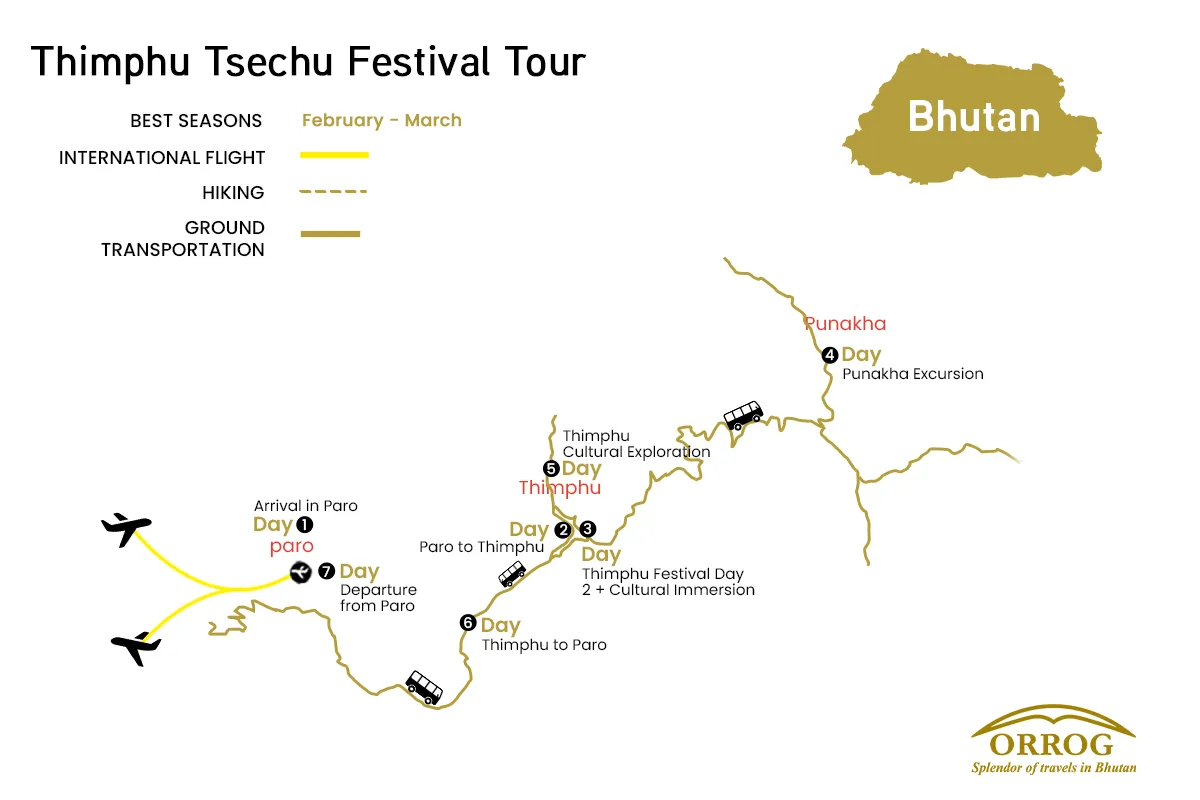
FAQs for Thimphu Tsechu Festival Tour
It is estimated that a hike to the Tiger’s Nest (Paro Taktsang) monastery takes anyone about 3–4 hours round-trip. There are several tough parts, and you must climb a lot to reach the top. Although it may seem demanding, most healthy people can do it, and horses are available should you need them.
Photos can be taken at the festival, but at certain temples and during certain groups, it may not be permitted. Don’t take pictures of religious services or those who are praying without asking your guide first. Be kind to other people’s cultures.
Indeed, Bhutan is considered very safe. It is safer, and the society is highly peaceful in Bhutan. In general, people feel at ease as they enjoy their time visiting the site. Do what your guide recommends and treat the culture respectfully.
You need a visa and all necessary permits for your trip. These documents can not be received on the day of your arrival, so they must be processed before coming here. After you book a trip with us, we will manage these papers for you. Your Bhutan visa is arranged by Orrog as part of the package.
The main way to come to Bhutan is through Paro International Airport, which is well-connected to cities like Bangkok, Delhi, Kathmandu, and Singapore. Most people arrive by air, but if you plan to come via road, you can enter through Phuentsholing, located on the southern border with India, which is the most commonly used entry point.
It is recommended to apply for the visa at least 20 days before your planned departure date so that there is enough time for processing your Bhutan visa, finalizing your itinerary, and arranging your guides and transportation. Although visa processing itself is relatively fast once payment is received, early preparation helps avoid delays and ensures availability, especially during peak seasons (spring and autumn).
You don’t require a passport-size photo for the visa, but it is wise to carry at least 2–4 recent passport-sized photographs during your trip. These may be needed for local permits, registration, or when applying for a local SIM card upon arrival in Bhutan.
Yes, you can lengthen your stay in Bhutan either before or after your trip. Bhutan’s tourism model requires visitors to pay a Sustainable Development Fee (SDF) and a daily package cost, so any extra days will involve additional charges. Extensions are a great opportunity to explore cultural sites in Paro, Thimphu, or even add another short trip or day hike.
Yes, Bhutan requires full tour payment in advance before your visa can be processed and issued. The government of Bhutan regulates this policy to ensure that all travel arrangements are confirmed through a licensed Bhutanese tour operator. We are a licensed tour operator that ensures you have everything you need for a trouble-free trip.
Any personal expenses are not covered in the package like:
- Tips for your guide and other staff
- Bottled drinks and snacks(personal expense)
- Souvenirs or local crafts
Credit cards are easily accepted in major cities like Paro and Thimphu. But in remote areas, you may not have access to a card or an ATM. So, it is best to carry some cash before heading for the trip.
Tipping is not mandatory, but it is a widely appreciated gesture and a customary way to show gratitude for good service. The tipping guideline would be to give USD 5-10 per day as a tip for the guides and other staff.
Paro International Airport is the only international airport in Bhutan. It is well connected by flights from cities like Bangkok, Delhi, Kathmandu, and Singapore.
Yes, airport pick-up and drop-off are included in the package. We will have your guide and driver meet you at the airport and transport you to your hotel.
While Bhutan's roads are mostly paved, some parts are narrow, winding, and occasionally affected by weather. However, we ensure your travel is safe, well-maintained, and driven by an experienced professional throughout the journey.
Once you arrive in Paro, we will arrange private ground transportation to the starting point as we pass through lush valleys and traditional villages. So, you don’t have to worry about any transportation services.
Yes, it is very safe to travel even with children in Bhutan. Roads are well-maintained, and the pace of travel is generally relaxed and child-friendly.
We will usually travel in comfortable, private vehicles with experienced drivers. All ground transportation is included in your package.
The Bhutanese Ngultrum is used in Bhutan. All local transactions during the trip will be in BTN.
US Dollars (USD) are generally accepted at larger hotels, souvenir shops, and tour operators, particularly in Paro and Thimphu. However, it’s advisable to convert your currency to BTN for general purchases in rural areas. Other currencies like the Euro or the Pound are not commonly accepted directly.
No, credit or debit cards are not accepted on the trip, as it takes you through remote regions with no banking or electronic payment access. All trip-related payments like accommodation, meals, permits, etc, are paid in advance.
You can exchange foreign currency at the Paro International Airport, at banks, or through licensed money changers in cities like Thimphu and Paro. It's best to exchange enough cash before heading out on the trip.
The national language is Dzongkha, but many Bhutanese also speak English. If you speak English and are worried about communicating with the local people, you will have your guide as a translator.
Yes, all licensed tour guides in Bhutan are required to speak fluent English. Many are also trained in other languages such as German, Japanese, or French. Communication during the trip will be smooth and clear in English.
Most signboards, tourist maps, and information brochures are written in English, especially in tourist destinations like Paro, Thimphu, and trailheads. Directional signs along routes are often labeled in both Dzongkha and English.
No, learning Dzongkha is not at all needed for the trip, but knowing a few basic words like "Kuzu zangpo la" (Hello) or "Kadrinche la" (Thank you) is a good way to interact with the locals.
Language barriers are minimal, as your guide will handle all communication with locals and support staff. Your guide will translate for you during your interaction with the locals.
To greet people, you can greet with locals “Kuzu zangpo la” (Hello) by performing a slight bow. Most common greetings include physical greetings, such as shaking hands less visible, especially in rural areas.
Yes, but remember to seek permission, especially when taking photos of monks, locals, or temples. Please note that clicking photos is not allowed at most religious sites.
Visitors should dress modestly and respectfully. This means:
- Covering shoulders and knees
- Removing hats and sunglasses
- Not wearing shorts or sleeveless tops
This applies to both men and women.
Yes, Bhutanese society is deeply rooted in Buddhism and tradition. Here are some key taboos:
- Do not point your feet at people or sacred objects
- Never touch anyone on the head, as it is considered sacred
- Walk clockwise around temples, stupas, and religious monuments
- Avoid public displays of affection
While gifts are not expected, they may be accepted graciously if given with respect. It is advisable to consult with the guide before giving out anything.
Bhutan typically uses Type C, Type D, and Type G electrical outlets. Standard safe voltage is 230V and frequency is 50Hz; therefore, ensure that your equipment is compatible with this voltage.
Indeed, it is highly advised to take along a universal travel adapter, particularly one to fit a variety of types of plugs, because plugs can be different in a hotel or a guesthouse.
Bhutan follows Bhutan Time (BTT), which is UTC/GMT +6 hours. This time zone remains consistent throughout the year.
No, Bhutan does not observe daylight saving time. The country maintains the same time year-round.
Bhutan is 30 minutes ahead of India. For example, 12:00 PM in India is 12:30 PM in Bhutan.
Yes, souvenirs can be bought in Paro or Thimphu before or after the trip.
Some popular souvenirs include hand-woven textiles (kira and gho fabric), prayer flags, thangka (religious scroll) paintings, handmade paper products, traditional masks, and Buddhist artifacts.
You can do some gentle bargaining in local street markets. However, in government-run shops and fixed-price stores, prices are usually non-negotiable.
Only some larger shops in cities like Paro and Thimphu accept credit cards. The remote areas might not have a card payment option, so we suggest that you carry some cash.
Yes, you can easily purchase a SIM card upon arrival in Bhutan. We will assist you with the process, and you'll need a passport copy and a passport-sized photo.
No, internet access is not available during the trip. However, Wi-Fi is available in hotels in Paro and Thimphu before and after the trip.
B-Mobile (by Bhutan Telecom) and TashiCell are the two main service providers. B-Mobile tends to have better coverage in rural and mountainous areas
Since the weather can be unpredictable and temperatures can vary drastically, layered clothing is essential. You should pack:
- Base layers (thermal tops and bottoms)
- Insulating layers like fleece or down jackets
- Waterproof and windproof outer layers
- Warm hats, gloves, and neck gaiters for freezing conditions
The weather is clear with mild daytime temperatures during spring and autumn.
Tsechu is a religious festival held in honor of Guru Rinpoche, featuring mask dances, rituals, and traditional performances. It's a colorful and spiritual experience for all ages.
Yes, festivals are family-friendly and offer a unique cultural experience for children, although large crowds can be overwhelming for very young kids.
Modest, respectful attire is recommended. Traditional Bhutanese dress (Gho/Kira) is encouraged and can be arranged for you.
Yes, all tours include certified, English-speaking guides who are knowledgeable in Bhutanese history and culture.
You can learn about the Bhutanese culture through local interactions, homestay visits, cooking classes, traditional art workshops, and attending local festivals and religious ceremonies.
Reviews & Ratings
-
Guarantee -
Thimphu,Bhutan -
975+17160228
Ready to Explore Bhutan?
Start your journey today and discover the magic of Bhutan with our expert guides and carefully crafted tours.
Book This Trip
-
No booking or credit card fees -
Best price guarantee -
Full customize trip
Ask a Question
Feel free to ask us anything about this tour. A travel expert will then get back to you as soon as possible
Ready to Explore Bhutan?
Start your journey today and discover the magic of Bhutan with our expert guides and carefully crafted tours.
